IAHN
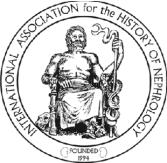





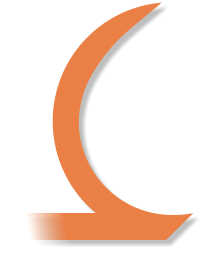
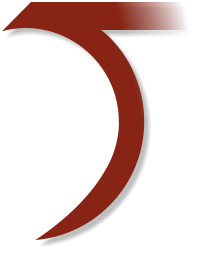
Editor-in-Chief: Janusz Ostrowski
Deputy Editor-in-Chief: Davide Viggiano
Editors: Maria Kalientzidou, Guido Gembillo
IAHN Bulletin is the official E-Newsletter of the International Association for the History of Nephrology
Bulletin
No. 13, December 2024
www.iahn.info
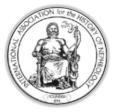
We
are
delighted
to
present
the
13th
issue
of
the
Bulletin,
the
official
journal
of
the
International
Association
for
the
History
of
Nephrology
(IAHN).
As
always,
it
is
dedicated to our members, supporters, and all enthusiasts of medical history, with a particular focus on the prominent field of nephrology.
The
centerpiece
of
this
issue
is
a
summary
of
the
recent
IAHN
Congress,
held
in
November
in
the
beautiful
city
of
Naples,
Italy,
as
shared
by
our
new
President,
Professor
Davide
Viggiano.
Alongside
this,
we
feature
selected
materials
presented
during
the
Congress
and
provide
updates
on
significant
nephrology-related
events across Europe, highlighting the activities of our representatives.
We
warmly
encourage
all
readers
to
contribute
to
our
editorial
team.
Please
note
that
the
Bulletin
is
available
on
both
the
IAHN
website
and
the
European
Renal
Association (ERA) platform.
As we approach the festive season and welcome the New Year of 2025, I wish all our friends a year filled with success, good health, peace, and happiness.
Enjoy reading this issue, and let me extend another invitation to join us in shaping future editions of our Bulletin.
Janusz Ostrowski
Editor-in-Chief
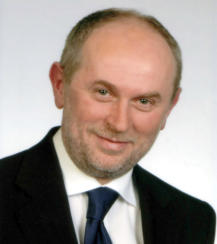
Janusz Ostrowski

Board of the International Association for the History of Nephrology




President - Davide Viggiano
PAST President - Ayse Balat
TREASURER - Vincenzo Savica
EX OFFICIO - Natale De Santo
INTRODUCTION
Professor, Department of the History of Medicine,
Centre of Postgraduate Medical Education, Warsaw, Poland
janusz.ostrowski@cmkp.edu.pl
Janusz Ostrowski
From
December
15-17,
2024,
the
International
Association
for
the
History
of
Nephrology
(IAHN)
convened
its
13th
Congress
in
the
historic
Camaldoli
Hermitage,
located
in
the
heart
of
Naples,
Italy.
Far
more
than
just
an
academic
gathering,
the
event
served
as
a
profound
exploration
into
the
evolution
of
nephrology,
bringing
together
distinguished
scholars,
historians,
and
practitioners
from
across
the
globe.
The
majestic,
centuries-old
Camaldoli
Hermitage,
with
its
spiritual
and
scholarly
heritage,
provided
the
perfect
backdrop
for
a
congress
that
not
only
examined
the
past
of
nephrology
but
also
laid
the
groundwork
for
future
advancements in the field.
A Venue Steeped in History
The
Camaldoli
Hermitage,
known
for
its
architectural
magnificence
and
deep
historical
roots,
was
an
ideal
setting
for
an
event
that
sought
to
explore
the
ongoing
evolution
of
nephrology.
Its
walls,
imbued
with
centuries
of
knowledge
and
spiritual
reflection,
provided
a
fitting
environment
for
discussions
centered
on
the
continuity
of
medical
wisdom,
passed
down
through
generations.
The
location
itself
symbolized
the
congress’s
theme:
a
commitment
to
examining
the
ongoing
journey of nephrology, from its earliest days to the modern breakthroughs shaping contemporary practices.
A Global and Diverse Gathering
The
congress
was
a
global
gathering,
with
22
scholarly
interventions
complemented
by
four
magistral
lectures
and
a
specialized
Italian-language
satellite
session.
The
program’s
wide-reaching
international
scope
was
reflected
in
the
speakers
and
their
diverse
backgrounds,
coming
from
countries
such
as
Turkey,
Poland,
Slovakia,
Greece,
Italy,
and
the
United
States.
This
international
representation
illustrated
the
deeply
global
nature
of
nephrology,
uniting
scholars
from
different
continents to explore shared histories and challenges in the field of kidney health.
Focusing on Innovation and History
A
key
highlight
of
the
congress
was
a
unique
Italian
satellite
session
dedicated
to
pharmaceutical
discoveries,
specifically
groundbreaking
treatments
like
roxadustat
for
anemia
and
budesonide
for
IgA
nephropathy.
This
session
focused
on
the
intersection
of
historical
research
and
medical
innovation,
demonstrating
how
an
understanding
of
nephrology's
past
provides
critical
insights
into
current
breakthroughs.
Understanding
the
evolution
of
treatments,
from
ancient
remedies to modern pharmaceuticals, helped contextualize current challenges in the field.
THE 13
TH
IAHN CONGRESS IN 2024: A DEEP DIVE INTO
NEPHROLOGY'S RICH HISTORY

Guido Gembillo
Katarina Derzsiova
Vincenzo Savica
Ioannis Stefanidis
Murat Aksu
Abdullah Yildiz
Mario Lamagna
Councillors:
Naples, Camaldoli Hermitage. Photo. Janusz Ostrowski
Janusz Ostrowski




FERDINAND DEMANT AND THE BIRTH OF PEDIATRIC
NEPHROLOGY IN KOSICE
Former Head of the Nephrological Laboratory IV
th
Internal Clinic
University Hospital of L. Pasteur, Košice, Slovak Republic
Dipl. Ing. Katarina Derzsiova
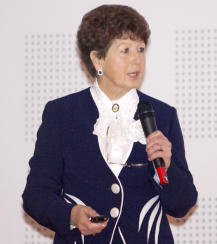
Janusz Ostrowski




THE ITALIAN SOCIETY OF NEPHROLOGY AWARDED
THE ANTONIO VERCELLONE PRIZE FOR HUMANISM IN MEDICINE
TO NATALE GASPARE DE SANTO
President of the Italian Branch of European Association of Professors Emeriti,
Messina, Italy, gbellinghieri@hotmail.com
Guido Bellinghieri
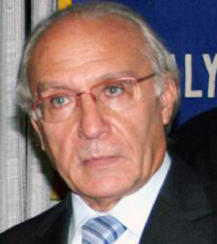
Janusz Ostrowski




Department of Translational Medical Sciences,
Univ. of Campania “L. Vanvitelli”, Naples, Italy
Davide Viggiano
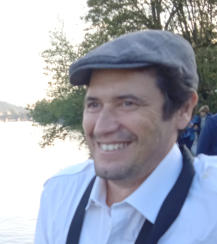

Dr Mariaelena Liberti

Prof. Marcellino Monda

Dott olga Credendino and Raffaele Genualdo
Devastation and Medical Response: The 2023 Turkey Earthquakes
Among
the
most
impactful
presentations
was
the
magistral
lecture
held
by
prof
Ayse
Balat,
who
discussed
the
catastrophic
effects
of
the
2023
earthquakes
in
Turkey,
which
resulted
in
the
tragic
loss
of
over
53,000
lives
and
left
hundreds
of
thousands
injured.
A
particularly
alarming
consequence
was
the
emergence
of
Crush-Acute
Kidney
Injury
(Crush-AKI)
among
survivors,
particularly
children.
This
stark
reminder
of
the
urgency
of
timely
medical
intervention
highlighted
the
importance
of
dialysis
in
disaster
zones,
where
damaged
infrastructure
and
logistical
challenges
complicate
healthcare
delivery.
This
timely
and
emotionally
charged
lecture
was
recalling
us
other
important
historical
contributions
on
the
theme
of
crush
syndrome
made
by
the
IAHN
(see
the
nice
papers
by
prof
De
Santo).
Prof Balat has been also invited to held a seminar at the Academy of Sciences in Naples.
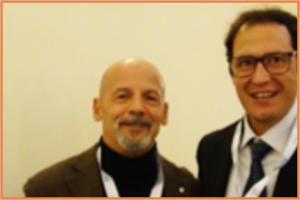
Prof. Giuseppe Gigliotti

Dr Mariarosaria Iannuzzi

Dr Michelangelo Nigro

Prof Aysa Balat during the introductory lecture
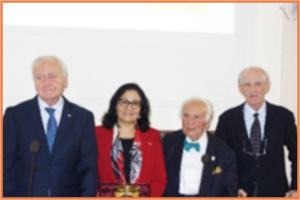
Academy of Sciences Naples
(from left: prof Parmeggiani, Balat, De Santo, Satini)
Revisiting Groundbreaking Discoveries
The
magistral
lecture
by
Raymond
Ardaillou,
honorary
permanent
secretary
of
the
National
Academy
of
Medicine
–
Académie
Nationale
de
Médecine,
Paris,
on
the
renin-angiotensin-aldosterone
system
(RAAS)
provided
a
rich
historical
perspective,
tracing
over
a
century
of
discoveries
starting
with
the
identification
of
renin
in
1898
by
R.
Tigerstedt.
Ardaillou
discussed
subsequent
key
breakthroughs
involving
angiotensin
and
aldosterone,
which
have
shaped
our
understanding
of
blood
pressure
regulation.
These
discoveries
paved
the
way
for
therapies
like
ACE
inhibitors
(such
as
captopril)
and
Angiotensin
II
receptor
blockers
(such
as
sartans),
both of which have had a transformative impact on hypertension and related cardiovascular diseases.
In
a
fascinating
historical
segment,
Mario
Lamagna
presented
a
study
on
Byzantine
uroscopy,
exploring
how
ancient
Byzantine
physicians,
influenced
by
Hippocratic
principles,
used
urine
as
a
diagnostic
tool.
The
practice
of
uroscopy,
particularly
the
manipulation
of
the
matula
(urine
container),
played
a
crucial
role
in
ancient
medical
practice.
Lamagna’s
insights
into
how
Byzantine
scholars
merged
traditional
knowledge
with
emerging
experimental
methods
highlighted
a
rich tradition of inquiry that continues to influence modern medical approaches.
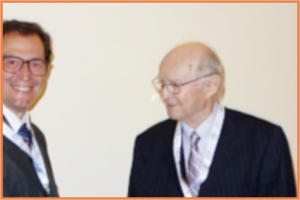
Prof Jan Kurkus (right) with prof Viggiano (left)

Prof Mario Lamagna (left)
with Prof Diamandopoulos (right)
Contemporary Nephrology and Sustainability
Vincenzo
Savica’s
talk
brought
a
forward-thinking,
sustainability-oriented
perspective
to
nephrology.
He
explored
the
concept
of
the
kidney
as
a
"green
organ,"
emphasizing
how
urine,
traditionally
seen
as
waste,
could
be
repurposed
in
innovative
ways.
Savica
presented
compelling
possibilities
for
using
urine
to
produce
water,
energy,
and
even
materials
for
construction.
His
ideas
suggested
that
urine-based
technologies
could
provide
sustainable
solutions
to
environmental
challenges
on
Earth,
and
even
in
extraterrestrial
settings
like
the Moon or Mars, where resource scarcity is a pressing concern.
Honoring Key Figures in Medicine
As
with
any
major
conference,
the
IAHN
Congress
took
the
time
to
honor
those
who
have
made
enduring
contributions
to
the
field
of
nephrology.
Rosa
Maria
De
Santo
paid
tribute
to
the
late
Elio
Lugaresi,
a
trailblazer
in
sleep
medicine,
for
his
pioneering
research
in
understanding
sleep
disorders
such
as
obstructive
sleep
apnea.
Carmela
Bisaccia
took
a
historical
approach
to
the
study
of
gout,
examining
Aulus
Cornelius
Celsus's
influential
contributions
to
early
medicine,
particularly
his
work
on
podagra
(gout).
Their
discussion
demonstrated the link between ancient practices and modern approaches to managing the condition.
The
congress
also
honored
Dimitar
Nenov,
a
leading
Bulgarian
nephrologist
who
had
made
significant
strides
in
advancing
nephrology
in
the
Balkans.
Nenov
founded
the
Varna
Kidney
Foundation
and
played
a
pivotal
role
in
the
establishment
of
the
Balkan
Society
of
Nephrology
(BANTAO),
fostering
regional
cooperation
and
advancing the field across the Balkans.
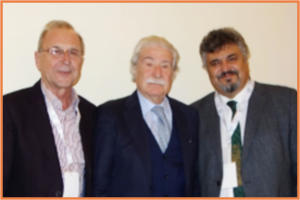
Prof Vincenzo Savica between Prof Kouloridis (left)
and Aciduman (right)
Jan
Kurkus
and
colleagues
revisited
the
contributions
of
Homer
W.
Smith,
who
developed
the
clearance
technique
to
assess
kidney
function.
Smith’s
1951
book,
The
Kidney:
Structure
and
Function
in
Health
and
Disease,
remains
a
foundational
text
in
nephrology.
The
Homer
W.
Smith
Award
continues
to
honor
groundbreaking contributions in the field.
Prof
Ostrowski’s
contribution
on
Zbigniew
Fałda
recognized
his
pioneering
work
in
hemodialysis,
which
began
in
1959
when
he
introduced
the
procedure
to
Warsaw.
This
marked
a
milestone
in
renal
replacement
therapy
in
Eastern
Europe.
Fałda’s
collaboration
with
Nils
Alwall,
Belding
Scribner
and
Henry
Tenckhoff
led
to the development of home peritoneal dialysis, shaping modern dialysis practices in Poland and beyond.
Prof. Katarína Derzsiová presented the biography of professor Ferdinand Démant (1911 -1988), founder of the European Society for Paediatric Nephrology.

Prof Jan Kurkus
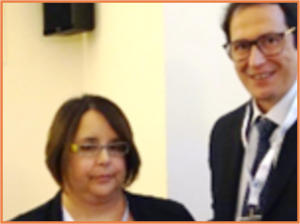
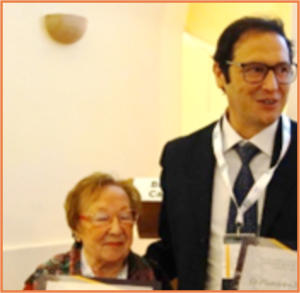
Dr. Carmela Bisaccia

Prof. Janusz Ostrowski (right) with Prof Helvaci (left)

Ing. Katarina Derzsiova with Prof Helvaci (left)
A Deep Dive into Ancient Medical Texts
Athanasios
Diamandopoulos’s
lecture
offered
a
fascinating
analysis
of
ancient
Greek
medicine,
specifically
regarding
symptoms
resembling
modern
acute
kidney
injury
(AKI).
In
his
study
of
the
Regimen
from
the
Corpus
Hippocraticum,
Diamandopoulos
highlighted
how
early
Greek
physicians
made
astoundingly
accurate
observations
about
kidney
injury,
including
the
neuro-visual
symptoms
that
are
now
recognized
as
part
of
AKI.
Dr
Mussi
has
presented
a
detailed
analysis
of
Pseudo-Galenic treatise De renum affectionibus.
Another
historical
perspective
came
from
Natale
G.
De
Santo,
Carmela
Bisaccia
and
Luca
S.
De
Santo,
who
traced
the
evolution
of
gout
from
ancient
times
through
to
the
Renaissance.
Their
lecture
illuminated
early
understandings
of
the
condition,
as
well
as
treatments
such
as
dietary
changes
and
bloodletting,
which remain somewhat relevant in modern approaches to managing the disease.
The
congress
also
explored
the
influence
of
ancient
texts
on
modern
medical
terminology.
L.
Iorio
presented
an
analysis
of
De
Medicina
by
Isidore
of
Seville,
demonstrating
how
ancient
medical
writings
shaped
the
development
of
key
medical
concepts,
including
those
related
to
kidneys
and
urological
diseases.
These
ancient texts provided the building blocks for much of the medical terminology still in use today.
Of interest also the recipes for kidney ailments in the “Dynameron” by Nicolaos Myrepsos (13th c AD) presented by prof Stefanidis.
Kalientzidou
and
Stefanidis’s
research
on
the
19th-century
study
of
uremia
tracked
the
evolving
understanding
of
the
condition,
which
eventually
linked
uremia
to
kidney
disease
like
Bright’s
disease.
Meanwhile,
scholars
such
as
Ahmet
Acıduman
and
Abdullah
Yıldız
focused
on
figures
like
Antyllus
and
Ibn
al-Jazzār,
highlighting their contributions to urinary catheterization and treatments for kidney-related conditions during antiquity and the medieval Islamic world.

Prof Natale De Santo (right) with Prof Ostrowski (left)

dr Maria Kalientzidou between
Prof Widmer (left) and Prof Kurkus (right

Prof Luigi Iorio (left) with dr. Gembillo (right)
Notable
are
also
works
by
prof
Murat
Aksu
on
Surgeon
Mesud,
which
greatly
increase
our
knowledge
on
the
history
of
Arabic-Turkish
nephrology,
the
work
on
Reinassance
dietary
causes
of
gout
and
melancholia
by
prof
Widmer,
the
history
of
hemodialysis
by
prof
Gembillo,
the
concept
of
uremia
in
19th
century
by
prof
Kalientzidou,
the
historical
analysis
of
the
discovery
of
Aristolochic
Acid
nephrotoxicity
described
by
prof
Koulouridis
and
the
history
of
renal
anemia
treatment
by
prof Stefanidis.

From left: Prof Yildiz Abdullah, Prof. David Widmer,
Prof. Murat Aksu
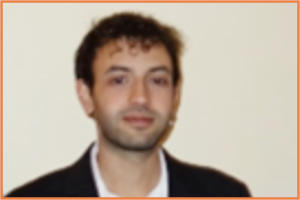
Dr Davide Mussi

From left: dr. Guido Gembillo, dr Maria Kalientzidou
Conclusion: A Continuing Legacy of Medical Discovery
The
13th
IAHN
Congress
in
Naples
offered
an
inspiring
journey
through
the
history
of
nephrology,
showcasing
how
medical
knowledge
has
been
built
over
centuries,
from
ancient
Greece
and
Byzantium
to
modern-day
innovations.
The
congress
underscored
the
importance
of
understanding
the
past
to
shape
the
future,
as
the
integration
of
historical
insights
and
contemporary
breakthroughs
in
nephrology
continues
to
drive
progress
in
patient
care.
Through
its
mix
of
historical
reflection,
recognition
of
past
pioneers,
and
a
forward-looking
approach
to
modern
challenges,
the
congress
demonstrated
the
ongoing
evolution
of
nephrology as both a science and a field of practice.
Janusz Ostrowski




PROFESSORS EMERITI AT THE 13TH CONGRESS
OF THE INTERNATIONAL ASSOCIATION FOR THE HISTORY
OF NEPHROLOGY IN NAPLES
Professor Emeritus University of Campania Luigi Vanvitelli, Doctor
Honoris Causa of the Medical University of Varna and of the Pavol Jozef
Šafárik University in Košice, natalegaspare.desanto@unicampania.it
Natale Gaspare De Santo
A spectacular venue
The
13th
Congress
of
the
International
Association
for
the
History
of
Nephrology
(IAHN)
took
place
on
November
13-15
2024
at
Eremo
of
Camaldoli,
in
Naples
on
the
hill
(585
m
high
above
sea
level)
opposite
to
Mt.
Vesuvius.
The
venue,
is
a
former
monastery
of
the
Camadolese
Congregation
of
the
Order
of
Saint
Benedict.
The
main
church,
opened
to
the
public,
is
rich
of
pieces
of
renowned
painters
including
Massimo
Stanzione,
Andrea
Mozzilli
and
Federico
Barocci
The
place
has
now
been
turned
into
a
small
hôtel
de
charme,
a
place
for
meditation
and
classic
music
driven
by
the
Nuns
of
the
Order
of
Saint
Bridget
of
Sweden,
that
granjt
silence, beauty and spirituality...
About the International Association for the History of Nephrology (IAHN)
IAHN
was
founded
in
1992
by
Natale
Gaspare
De
Santo,
Garabed
Eknoyan
and
the
Late
Shaul
D.
Massry
while
by
bus
were
moving,
along
with
renowned
world
nephrologists, from Lublin to Poznan, to give birth the Poznan Foundation of Nephrology (1, 2).
IAHN
in
the
last
forty
years
has
pubblished
its
proceedings
in
peer
review
journals
(American
Journal
Nephrology,
Journal
of
Nephrology,
Giornale
IItaliano
di
Nefrologia,
Hellenic
Journal
of
Nephjrology,
Clinical
and
Experimental
Transplantationcaring
for
the
publication
of
no
less
than
five
hundred
papers
that
represent
the
critical
mass
of
data
needed
to
understand
that
nephrology,
although
turned
into
an
academical
and
clinical
discipline
early
in
the
sixties
of
last
century, had a long history with relevant roots in Greek, Roman, Arabic, Salernitan, Renaissance Medicine.
It
is
a
privilege
to
remember
that
Shaul
Massry,
President
of
the
National
Kidney
Foundation
of
the
United
States,
was
the
first
editor
of
a
clinical
journal
of
nephrology
who,
in
the
nineties
of
the
last
century,
enroled
an
Editor
for
History
for
American
Journal
of
Nephrology
givng
origin
to
the
gold
era
of
editors
in
nephrology with a talent in history.
The 13th Congress of the Intenational Association for the History of Nephrology
Some
fifty
historians
of
nephrology
from
France,
Greece,
Italy,
Poland,
Slovakia,
Spain,
Sweden,
Turkiye,
UK
and
USA
met
on
November
15-17
2024.
Scientific
events
(including
appealing
keynote
lectures),
and
visits
to
the
beauties,
monuments
and
museums
of
the
city
were
well
mixed
up
under
the
heading
From
ancient
remedies
to
modern
medical
marvels
by
the
President
of
the
Congress
Professor
Davide
Viggiano,
Associate
Professor
of
Nephrology
at
the
University
Luigi
Vanvitelli.
The
congress
was
honored
by
the
presence
at
the
opening
ceremony
by
(i).
Professor
Ludovico
Docimo
President
of
the
Italian
Society
of
Surgery
and
President
of
the
College
of
the
Historians
of
Surgery,
(ii.)
Marcellino
Monda
President
of
the
School
of
Medicine
of
University
Luigi
Vanvitelli.
(iii).
Professor
Luca
De
Nicola
President
of
the
Italian
Society
of
Nephology,
Patron
of
the
Congress
and
by
(iii)
Gennaro
Rispoli,
Historian
of
the
Hospitals
and
Director
of
the
Museum
of
Arti
Sanitarie
in
the
Hospital
of
Incurabili
in
Naples.
The
Museum
(that
includes
the
old
pharmacy
–
a
monument
per
se
with
its
breathaking
colleetion
of
pharmacy
jars)
is
a
place
where
no
less
than
40
saints
worked
including
a
Saint
of
our
times,
San
Giuseppe
Moscati,
a
place
where
Domenico
Cotugno,
was
the
first
to
measure
proteinuria
in
a
dropsycal
soldier
and
introduced
“La
Nuova
Medicina”
(the
new
medicine),
well
before
Pierre-Joseph
Desault
in
France.
Cotugno
with Hunter and Desault is credited of the construction of clinical science (3).
Keynote
lectures
were
related
to:
Disaster
of
the
century,
2023
Türkiye
earthquake:
Dialysis
in
children
with
crush
injuries
and
our
experiences
with
kidney
care
(Ayse
Balat,
Gaziantep);
The
History
of
the
Renin-Angiotensin
System
(Raymond
Ardaillou,
Paris),
The
Theory
and
practice
of
Byzantine
Uroscopy
(Mario
Lamagna,
Naples), The kidney : a bridge between past, present and future in the green circular economy (Vincenzo Savica, Messina)
A
special
mention
is
deseved
by
some
very
special
contribution
presented
at
the
congress
that
underline
the
peculiar
interest
of
nephrologists
turned
into
historians of their discipline:
Etymologies
or
Origins
by
Isidore
of
Seville
(codex
2,
SS.
Trinità
Abbey
–
Cava
dei
Tirreni).
“De
Medicina”
–
Book
VI
(Luigi
Iorio);
The
Pseudo-Galenic
treatise
De
renum
affectionibus
and
the
Knowledge
of
Nephrology
in
Late
Antiquity
(D.
Mussi);
Antyllus’s
account
on
the
urinary
catheterization
and
medical
treatment
of
urolithiasis
in
al-Rāzī’s
Kitāb
al-Hāwī
(A.
Aciduman);
.
Recipes
for
kidney
ailments
in
the
“Dynameron”
by
Nicolaos
Myrepsos
(13th
c
AD)
(E.
Valiakos,
A.Diamantopoulos,
G.
Filippidis,
T.
Eleftheriadis.,
I.Stefanidis).Recipes
for
urinary
tract
problems
from
Nidāʾī,
one
of
the
important
physicians
in
the
Ottoman
Empire of the sixteenth century, in Manāfiʿ al-Nās (A. Balat and A. Aciduman).
The link IAHN-EAPE
Some
Founder
of
IAHN
Natale
G.
De
Santo,
Garabed
Eknoyan,
Guido
Bellinghieri,
Athanasios
Diamandopoulos,
Vincenzo
Savica,
Raymond
Ardaillou,
have
also
participated in the birth of the European Association of Professors Emeriti (EAPE) creating a strong link between the two associations.
The
2024
IAHN
Congress
at
Eremo
Camaldoli
in
Naples
was
attended
by
Raymond
Ardaillou,
Vincenzo
Savica,
Natale
Gaspare
De
Santo
(On
Gout
from
Corpus
Hippocraticum
to
Renaissance)
Athanasios
Diamandopoulos
(Correlation
between
neuro-visual
symptoms
and
the
oliguric
and
polyuric
phase
of
AKI,
according
to
the
Hippocratic
Treatise
Regimen),
Guido
Gembillo,
Guido
Bellinghieri,
Bellinhieri,
Vincenzo
Savica
and
Domenico
Santoro
(Messina)
A
century
after
the
first
human
haemodialysis,
a
milestone
in
nephrology).
Furthermore,
Vincenzo
Savica
revisited,
his
original
and
well
illustrated
presentation
on
urine.
Natale
G
De
Santo
illustrated,
a
reconstruction
of
the
contributions
of
Dimitar
Nenov
to
nephrology
behind
the
Iron
Curtain,
that
also
enlightened
Dimitar
Nenov
as
outstanding clinical scientist, ,member of IAHN and of EAPE.
Katarína
Derzsiová
(Košice)
highlighted
the
contribution
of
Ferdinand
Demant
to
the
Birth
of
Pediatric
Nephrology
in
Europe.
She
is
a
special
person.
Engineer,
former
chief
of
the
Laboratory
of
the
IV
Internal
Clinica
at
the
Univesity
Hospital
Lois
Pasteur,
and
has
been
collaborator
and
partner
of
Professor
Mirolav
Mydlik.
a
founder and councilor of EAPE. Both were present in Athens.
Engineer
Derzsiova,
presently
Councilor
of
the
Intenational
Associatoion
for
the
History
of
Nephrology,
has
collaborated
to
the
Supplement
on
Aging
of
the
Bulletin
of
the
European
Association
of
Professors
Emeriti
and
subsequently
with
Professors
Emeriti
Anton
Fabian
and
Oliver
Victor
Racz
for
the
World
Day
of
Older
Persons
in
Košice.
She
has
authored
many
oustanding
papers
on
history
of
science
and
medicine
and
focused
on
towering
scientists
from
former
Czechoslovakia and of Slovakia (4,5). It should be noticed that Scopus also attests a fruitful scientific past collaboration -Mydlik-Derzsiová- Rácz (6).
Acknowledgement
The
paper
appears
at
the
same
time
in
the
Bulletin
of
the
European
Association
of
Professors
Emeriti
(2025;
5
(1),
following
the
traditional
collaboration
of
the
two
associations. It is published with the permission of its Editor-in-Chief Professor Emeritus George Andrei Dan.
References
1
.
Eknoyan G, De Snto NG, Massry SG. On the future of the History of Nephrology. Am J Nphrol 1994; 14(4-6): 255-6
2
.
(www//: IAHN.org accessed November 18, 2024
3
.
De
Santo
NG,
Bisaccia
C,
De
santo
LS,
Cirillo
M,
Richet
G.
La
Costruzione
della
Scienza
Clinica.
Istituto
Italiano
per
gli
Studi
Filosofici,
Arte
Tipografica
Editrice,
Napoli 2006
4
.
Derzsiovà K. Professor Miroslav Mydlík, MD, DSc. (1932–2018† ) A scientist. Arch Hell Medicine 2020, 37(Suppl 2):22-28.
5
.
Derzsiová K. Emigration of Scientists From Czechoslovakia During the Soviet Domination. Experimental and Clinical Transplantation (2023) Suppl 2: 72-77.
6
.
Mydlík
M.,
Derzsiová
K.,
Rácz
O.,
Šipulová
A.,
Lovásová
E.,
Molčányiová
A.
Petrovičová
J.:
Vitamin
E-coated
dialyzer
and
antioxidant
defense
parameters:
three-
month study. Semin. Nephrol., 24, 2004, č. 5, s. 525-531.

Fig. 1. From left: prof. Luigi Iorio, Natale De Santo,
Vincenzo Savica, Katarina Derzsiova. (photo Janusz Ostrowski)
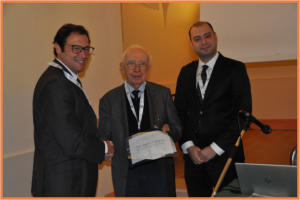
Fig. 2. Prof. Raymond Ardaillou (in the middle).
(photo Janusz Ostrowski)
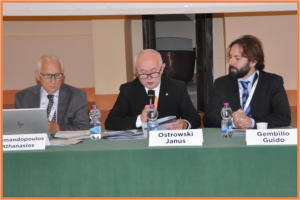
Fig. 3. Prof. Athanasios Diamandopoulos. First left
(photo Maria Ostrowski)
Professor
Démant
was
the
epitome
of
an
academic
physician:
pediatrician,
organiser,
scientist,
and
educator
(Fig
1).
He
was
the
founder
of
pediatric
nephrology,
he
was
at
the
birth
of
pediatric
nephrology
in
Košice
and
eastern
Slovakia
He
significantly
contributed
to
the
development
of
pediatric
nephrology
not
only
in
Slovakia
but also in Czechoslovakia.
Professor
Ferdinand
Démant
was
born
in
Budapest
(1911),
passed
away
in
Košice
(1988).
He
successfully
graduated
from
the
Faculty
of
Medicine
of
Charles
University
in
Prague
(1935).
After
graduation,
he
worked
at
the
Department
of
pediatrics
under
Professor
Jiří
Brdlík
(1935-1939),
the
father
of
Czechoslovak
pediatrics,
and
later
under
Professor
Jaroslav
Procházka,
the
father
of
infectology
in
Czechoslovakia.
He
used
the
experience
gained
during
these
stays
in
the
development
of
health
care
for
children
within
general
pediatrics
in
the
region
of
eastern
Slovakia,
especially
in
Košice.
Initially,
Professor
Démant's
interest
was
focused
on
infectology,
later on the field of pediatric nephrology.
History of pediatrics in Košice
At
the
beginning
of
the
20th
century,
pediatrics
in
Košice
had
no
premises
of
its
own,
it
was
without
resources
and
without
erudite
staff.
The
first
children's
ward
with
50
beds
was
located
in
the
newly
opened
State
Hospital
in
Košice
(1924)
and
the
head
physician
was
MUDr.
Anton
Korman.
In
1928,
the
Pasteur
Institute
also
was
established
in
the
State
Hospital
due
to
the
high
incidence
of
rabies
in
eastern
Slovakia.
Institute
was
headed by Václav Strimpl MD.
By
1945,
childcare
in
the
Eastern
Slovakia
region
was
at
a
very
low
level
with
a
high
morbidity
and
mortality.
A
milestone
in
improving
the
quality
of
care
for
children,
in
the
development
of
pediatrics
and
education
in
Košice
and
the
Eastern
Slovakia
region
occured
with
the
establishment
of
the
Faculty
of
Medicine
in
Košice
(1948),
as
a
branch
of
Comenius
University
in
Bratislava
and
after
the
establishment
of
P.
J.
Šafárik
University
(UPJŠ), in Košice (1959), (Fig. 2), (1, 2).
Košice
has
been
an
important
University
city,
cultural,
economic,
political,
and
educational
centre
since
the
17th
century.
UPJŠ
historically
followed
the
tradition
of
Košice
University
-
Universitas
Cassoviensis,
founded
in
1657
and
confirmed
by
the
Golden
Bull
-
Bula
aurea,
,
isued
by
the
King
of
Hungary
and
of
Bohemia,
and
the
Roman
Emperor
Leopold
I
(1660).
The
University
was
renamed
the
Royal
Academy
of
Košice
in
1776
and
was
cancelled in 1922 (3).
After
establishment
the
Faculty
of
Medicine
the
Children's
Ward
became
the
Children's
Clinic.
The
first
head
was Professor Démant, who headed it from 1948 to 1976.
From
the
Children
Clinic
with
additional
pediatric
departments
and
290
beds
became
the
Children's
Hospital.
In
1966,
the
departments
of
the
Children's
Hospital
were
renamed
the
Regional
Children's
Hospital
and
Professor
Démant
was
appointed
as
its
temporary
director.
After
further
development
of
pediatrics,
it
became
the
University
Children's
Hospital
(1976),
which
highlighted
not
only
its
medical
but
also
its
educational
mission
in
educating
young
physicians.
The
main
actor
in
all
these
changes
was
Professor
Ferdinand
Démant,
who
represented both the clinical and scientific pediatrician.
Scientific and pedagogical activities of Professor Démant
Professor
Démant
has
lectured
and
published
initially
mainly
in
the
field
of
infectology.
In
later
years,
he
turned
his
attention
to
the
field
of
pediatric
nephrology.
He
was
tireless.
He
was
the
author/co-author
of
more
than
400
publications,
40
books
or
chapters
in
books,
and
contributed
a
chapter
on
nephrology
to
the
national
textbook
Detské
lékařství
(Pediatric
Medicine)
(1964),
(4,5).
He
was
a
co-author
of
the
book:
Šašinka
M,
Buchanec
J,
Démant
F
et
al.
Nephrology
of
Children
and
Adolescents,
1985,
759
p.
In
this
book
he
participated
in 11 chapters out of 22.
He
educated
many
generations
of
pediatricians,
PhD
holders
in
pediatrics,
associate
professors,
Doctor
of
Sciences
(DSc).
and
5
professors:
Štefan
Sršeň,
Ján
Jacina,
Oľga
Pavkovčeková.
Vojtech
Kluka,
Eva
Matheová.
He
also participated in the education of children's nurses.
He
used
his
organisational
skills
and
experience
as
Dean
of
the
Faculty
of
Medicine
in
Košice
from
1950
to
1952
(Fig.
3).
Professor
Démant
was
regional
expert
in
pediatrics,
built
a
network
of
pediatric
departments
within
district
hospitals,
he
founded
the
Eastern
Slovakia
Pediatric
Section
of
the
J.
E.
Purkyně
Society,
the
School
of
Pediatric
Nephrology
of
Košice,
which
became
a
tradition.
Many
years
he
was
the
editor
of
the
journal
Československá
Pediatrie
(
Czechoslovak
Pediatrics),
a
member
of
the
committee
of
the
Slovak
Pediatric
Society, and a member of several advisory commissions to the Slovak Ministry of Health.
He
was
also
active
in
international
organisations.
Since
1961
he
was
a
member
of
the
Czechoslovak
Commission
for
Cooperation
with
UNESCO.
He
received
honorary
membership
in
the
Pediatric
Societies
of
France and Germany.
After
reaching
retirement
age,
Professor
Démant
was
succeeded
by
Professor
Oľga
Pavkovčeková,
CSc.
(1976
–
1991),
then
by
Professor
Miroslav
Šašinka,
DSc.
from
Bratislava
(1992
–
1999).
Subsequently,
the
clinic
was
headed
by
Professor
Ľudmila
Podracká,
CSc.,
until
2013.
All
of
them
contributed
especially
to
the
development
of pediatric nephrology (1,2).
The
pediatric
workplaces
moved
to
the
new
Children’s
Faculty
Hospital
in
2004
and
at
the
end
of
2013,
the
Clinic
of
Children
and
Adolescents
of
the
UPJŠ
Faculty
of
Medicine
and
the
Children's
University
Hospital
was
established
under
the
leadership
of
Professor
Ingrid
Schusterová
and
currently
Assoc.
Professor.
Veronika
Vargová.
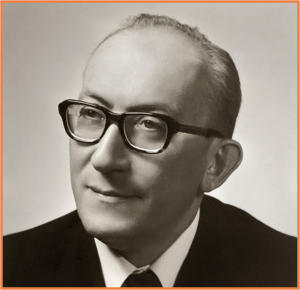
Fig. 1. Professor Ferdinand Démant (1911-1988)
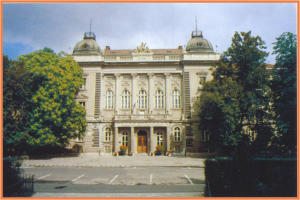
Fig. 2. P. J. Šafárik University in Košice
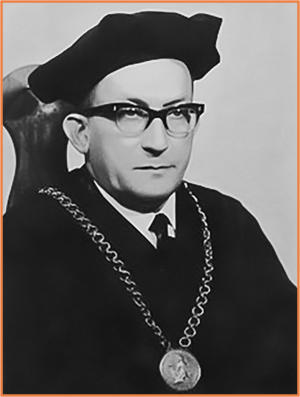
Fig. 3. Professor Ferdinand Démant, Dean of the Faculty
of Medicine in Košice (1950 –1952)

Fig. 4. Štrbské Pleso, the High Tatras, Czechoslovakia
References
1
.
Kuchta
M.
Prof.
MUDr.
Ferdinand
Démant
v
kontexte
histórie
pediatrie
v
Košiciach,
pri
príležitosti
110.
výročia
jeho
narodenia
/
Professor.
Ferdinand
Démant,
MD, in the context of the history of pediatrics in Košice, on the occasion of the 110th anniversary of his birth. Pediatria (Bratislava) 2021; 16 (3): 149-151.
2
.
Michaličková J. Profesor Ferdinand Démant (11.02. 1911 – 26.06. 1988). Čs. Pediatria 1988;43(2):744.
3
.
Košická Univerzita – Wikipédia. https://sk.wikipedia.org/wiki/Košická_univerzita
4
.
Démant
F,
Mydlík
M,
Kahanec
D,
Tischler
V.
Terapeutický
význam
peritoneálnej
dialýzy
pri
hemolyticko-uremickom
syndróme
dojčiat
/
Therapeutic
significance
of peritoneal dialysis in hemolytic-uremic syndrome of infants. Čs. Pediat 1970; 7: 316-319.
5
.
Démant
F.
Diseases
of
the
urogenital
system,
pp.
403-438.
In:
:
Author's
Collective.
Pediatrics–
textbooks
for
medical
faculties.
State
Medical
Publishing
House,
Prague, 1964 (4th ed), 647 p
6
.
Arneil
G,
Boda
D,
Ehrich
J
H
H,
Fanconi
A,
Habib
R,
Hallman
N.
The
founding
and
early
history
of
the
European
Society
for
Pediatric
Nephrology
(ESPN).
Pediatric Nephrology 2007; 22: 1-15

Janusz Ostrowski




DANA BARAN, PRESIDENT OF THE INTERNATIONAL
SOCIETY OF HISTORY OF MEDICINE
Professor Emeritus University of Campania Luigi Vanvitelli, Doctor
Honoris Causa of the Medical University of Varna and of the Pavol Jozef
Šafárik University in Košice, a founder of IAHN and EAPE and member
of IHSM. natalegaspare.desanto@unicampania.it
Natale Gaspare De Santo
Dana
Baran
(Fig.
1.),
Professor
emerita
of
History
of
Medicine
and
Pharmacy
at
the
Department
of
Interdisciplinary
Sciences,
Faculty
of
Medicine,
of
the
"Gr.T.Popa"
University
of
Medicine
and
Pharmacy
in
Iasi,
has
been
elected
the
18th
President
of
the
International
Society
for
History
of
Medicine
(ISHM)
founded
in
Paris in 1921.. She is the second woman to be elected president, the first was Ynez Viole O'Neil in 1996.
Professor
Baran,
the
recipient
of
the
2023
Victor
Victor
Babeș
Prize
of
the
Romanian
Academy
(Academia
Română)
for
the
book
Romanian
Personalities
and
Contributions
to
International
Medicine”,
Academy
Ed,
2021
(1),
has
been
working
hard
over
the
years
for
ISHM
as
Treasurer,
General
Secretary,
President
of
the
48th
Congress
in
Jasi
(on
line
and
in
presence
(2),
President
of
the
Scientific
Committee
of
the
2024
Salerno
Congress.
Dana
Baran
is
a
member
of
the
European
Association
of
Professors
Emeriti
(EAPE)
and
has
been
a
member
of
its
Board
of
Directors
and
collaborator
of
the
Bulletin
of
the
European
Association
of
Professors
Emeriti
and
speaker
at
the
International
EAPE
Congresses
in
Naples
and
London.
In
Naples
2022
she
lectured
on
“The
Relevance
of
Social
and
Professional
Masks”,
in
London
on
“British
Landmarks
in
Grigore
T.
Popa’s
Professional
Fulfilment”
and
“A
British
Model
in
Sanitary
Organisation
in
Dr.
Moise’s
Enescu
Papers”.
Dana
Baran
since
2013
is
an
active
member
member
of
the
International
Association
for
the
History
of
Nephrology
(IAHN).
She
has
promoted
joint
activities
of
ISHM
and
IAHN.
In
Salerno
on
October
10,
2024,
in
the
first
session
of
the
49th
ISHM
Congress
there
was
a
Round
Table
chaired
by
Athanasios
Diamandopoulos
with
the
participation
Carlos
Viesca,
Davide
Viggiano,
Natale
G.
De
Santo,
Athanasios
Diamandopoulos
and
Dana
Baran
(3).
The
ISHM
Executive
Committee
along
Dana
Baran
includes
Prof.
Maria
do
Sameiro
Barroso;
Prof.
Maria
Blanca
Ramos
de
Viesca; Prof. Ricardo Losardo and Dr. Andrew Nadell have been elected Vicepresidents of IHSM.
Professor Démant's participation in the European Nephrology
Professor
Démant
was
one
of
the
founders
of
the
European
Society
for
Pediatric
Nephrology
(ESPN)
in
1967,
which
is
considered
a
milestone
in
pediatric
nephrology
in
Europe,
and
became
a
councillor
(1967
-1970).
The
foundation
meeting
was
held
on
17
September
1967
at
the
University
of
Glasgow,
Royal
Hospital
for
Sick
Children.
Professor
Gavin
Arneil
from
Glasgow
became
its
President.
Thirty-six
of
the
forty-six
founding
members
from
22
European
countries
attended.
Professor
Ferdinand
Démant
from
Košice
(Czechoslovakia)
was among them.
On
19
September
1967,
the
European
Society
for
Pediatric
Nephrology
(ESPN)
was
established
(6).
In
1973,
the
7th
ESPN
Congress
was
held
at
Štrbské
Pleso,
in
the
High
Tatras
(Czechoslovakia)
(Fig.
4).
The
president
was
Professor
Démant,
a
member
of
the
ESPN
.
Professor
Ferdinand
Démant,
MD
was
a
outstanding
pediatrician,
pediatric
nephrologist,
organiser,
scientist,
and
teacher.
He
deserves
respect
and
thanks
for
his
meritorious
work in pediatrics, and for his contribution to the creation of the ESPN.
As a sign of respect and gratitude, his fellows in 2009 founded the "Démant's day" in his honor.

Fig. 1. Professor Dana Baran at a Recent Meeting
Professor
Juris
Salaks
an
Prof
Hamza
Essadam
have
been
elected
respectively
General
Secretary
and
Associate
General
Secretary.
Professor
Luca
Borghi
is
the
Treasurer
whereas
Prof.
Francesco
Galassi
has
been
confirmed
Editor
in
Chief
of
Vesaliius.
ISHM
Councilors
are:
Prof.
Giorgio
Zanchin;
Prof.
Jean-Pierre
Tricot;
Prof.
Ana Maria Rosso; Prof. Amélia Ricon Ferraz; Prof. Axel Karenberg; Prof. Daqing Zhang.
Dana
Barn
is
Elected
President
of
ISHM
at
a
time
she
is
Professor
Emerita
at
the
University
of
Jasi,
thus
she
can
devote
herself
full
time
to
the
society.
She
has
promised to make every member of the society active participant in furthering its goals. A special care will be dedicated to the younger members.
References
1
.
The
Romanian
Academy
“Victor
Babes
Prize
and
Romanian
Academy
of
Scientists
“Carol
Davila”
for
Professor
Dana
Baran
for
her
book
“
Romanian
Personalities
and
Contributions
to
International
Medicine”
Bull
Eur
Assoc
Profs
Emer
2024;
5(48th
Congress
of
the
International
Society
for
the
History
of
Medicine Iași - Romania, September 15-18, 2022 Abstract Book1): 19.
2
.
Abstract
Book
the
48th
Congress
of
the
International
Society
for
the
History
of
Meiicne,
Jasi,
Romania
Septemeber
25-18,
2022.
The
Medical-Surgical
Journal
of
the Physician and Naturalists, Jasi, Romania: 2022; 126: Suppl 3, S-5-S-184
3
.
Program
of
the
49th
Congress
of
the
International
Society
for
the
History
of
Medicine.
Ordine
dei
medici
e
degli
Odontoiatri
della
Provinciadi
Salerno
2024,
pp.
8-9.
INFO FROM POLAND
In each issue of the IAHN Bulletin, I provide updates on the activities of our members in Poland. This edition is no exception.
From
September
15th
to
20th,
I
had
the
privilege
of
visiting
the
University
of
Padua
in
Italy,
where
I
was
hosted
by
Professor
Lorenzo
Calò
as
part
of
a
scientific
fellowship
with
the
Nephrology,
Dialysis,
and
Transplantation
Unit
in
the
Department
of
Medicine.
During
my
stay,
I
had
the
opportunity
to
explore
the
Historical
Library
of
Medicine
and
Botany
Vincenzo
Pinali
and
Giovanni
Marsili
at
the
university’s
Botanical
Garden,
as
well
as
the
University
Library.
My
research
focused
on
the works of Renaissance anatomists, drawing on the resources of this renowned 800-year-old institution.
In
addition
to
my
research,
I
delivered
a
lecture
titled
Selected
Giants
in
Nephrology
Around
the
World
to
the
clinic
staff
and
postgraduate
nephrology
trainees.
The
presentation
highlighted
the
contributions
of
prominent
figures
such
as
Professors
Vittorio
Bonomini
(Italy),
Shaul
Massry
(USA),
Stewart
Cameron
(UK),
and
Zbylut
Twardowski
(Poland).
I
believe
that
incorporating
historical
perspectives
into
the
training
of
young
nephrologists
can
deepen
their
appreciation
for
the
field’s rich history, a sentiment that was clearly appreciated, as I have been invited to return next year.

Janusz Ostrowski




PROFESSORS EMERITI AT THE 49
TH
CONGRESS
OF THE INTERNATIONAL SOCIETY OF HISTORY
OF MEDICINE (SALERNO, OCTOBER 2024)
Professor Emeritus University of Campania Luigi Vanvitelli, Doctor
Honoris Causa of the Medical University of Varna and of the Pavol Jozef
Šafárik University in Košice, natalegaspare.desanto@unicampania.it
Natale Gaspare De Santo
The 49th Congress of the International Society of History of Medicine in Salerno
The
49th
Congress
of
the
International
Society
of
History
of
Medicine
was
an
occasion
to
meet
in
Italy
some
EAPE
members
who
were
speakers
at
that
huge
congress
encompassing
high
level
scientific
sessions
and
astonishing
visits
of
Salerno,
Pompei,
Sorrento,
Amalfi
Coust
and
Naples
and
taste
of
Mediterranean
cuisine.
The
main
events
took
place
in
Salerno
at
the
Historical
Salone
dei
Marmi
of
Palazzo
di
Città,
in
the
Council
Hall
of
Palazzo
San
Agostino
and
at
Teatro
Verdi.
The
congress
attracted
to
Salerno
–historically
known
as
Civitas
Hippocratica
-
many
hundreds
of
specialists
from
all
over
the
world.
The
Congress
was
presided
by
Professor
Emeritus
Carlos
Viesca
(Mexico
City).
Professor
Giorgio
Zanchin
(Padua)
was
the
vice
President.
Dana
Baran
was
Chair
the
of
the
Scientific
Committee
and also the General Secretary of the Congress.
The
International
Society
for
the
History
of
Medicine
traditionally
attracts
amembers
of
the
Interrnational
Assocition
of
Professors
Emeriti.
Among
those
participating
to
the
Congress
in
Salerno
there
were
Dana
Baran
(University
of
Jasi),
Athanasios
Diamanodopoulos
(Louros
Foundation
Athens),
Natale
Gaspare
De
Santo
(University
of
Campania
Luigi
Vanvitelli,
Naples),
Alberto
de
Leiva
Hidalgo
Universitat
Autònoma
de
Barcelona),
Oliver
Victor
Rácz
(Pavol
Jozef
Šafárik
University
in
Košice)
and
Paolo
Ciambelli
(University
of
Salerno).
Their
contributions
were
in
good
keeping
with
the
high
standard
of
the
Congress
that
benefitted
of the expertise of by renowned moderators.
Dana
Baran,
the
President
of
the
48th
IHSM
Congress
in
Jasi,
Professor
of
History
of
Medicine
and
Pharmacy
at
the
“Grigore
T.
Popa”
University
of
Medicine
nd
Pharmacy in Jasi, lectured on three topics.
Originality of the Salernitan Palimpsest
“An
outstanding
Medical
School
developed
in
Salerno,
on
the
Tyrrhenian
Sea.
At
the
crossroads
between
vanishing
and
nascent
worlds
and
civilisations,
it
reached
glory
in
the
High
Middle
Ages.
This
first
European
protouniversity
soon
became
a
paradigmatic
establishment.
Salernitan
medicine
integrated
and
enriched
knowledge
inherited
from
Ancient
Greek
and
Roman
Empires,
from
Medieval
Byzantine
and
Sasanian
Empires,
from
Hebrew
traditions
and
Arabic
schools
in
Bagdad,
North
Africa
and
Spain.
Indirectly
pharmacological
elements
pertaining
to
Ancient
Chinese
herbalism,
along
with
some
Indian
concepts
and
practices
were
assimilated,
too.
Preceding
the
Salerno
Medical
School,
the
Schools
of
Nisibis
and
Gundishapur
in
Euroasia
illustrated
comparable
functional
melting
pots,
enabling
fruitful
transition
from
previous
medical
understanding
to
Islamic
patterns
and
creativity.
Travelling
often,
scientists
from
different
ethnic
and
linguistic
groups,
religions
and
cultures
enjoyed,
for
a
while,
freedom
of
thought
and
speech.
In
Salerno,
Hippocratic,
Galenic
and
Avicennic
medicine,
or
Isaac
Israeli`s
works,
e.g.,
were
extremely
esteemed.
The
Regimen
Sanitatis
Salernitanum
recommended
sanogenetic
rules,
care
for
public
and
individual
Hygiene
–
expressing
“health”
itself,
and
diet
–
i.e.
a
balanced
lifestyle,
including
nutrition,
simple
remedies,
walking,
resting,
listening
to
music,
everything
in
moderation
at
the
right
time.
Salernitan
evidence-based
medicine
redimensioned
humoral
theories
in
relation
to
solidism
and
promoted
ethics.
Its
conceptual
universe
synthesised
a
planetary
approach,
reforging
the
quintessence
of
a
global
healing
art.
Its
spirit
defeated
prejudices,
promoted
women
and
multiculturalism,
proved
the
necessary
complementarity
between
Christianity,
Islam,
Judaism
and
Greek
and
Roman
paganism,
sacred
consciousness
and
profane
attitude,
personal
mentalities
and
regional
customs,
achieving
a
pre-Renaissance
anthropological
vision.
Physicians
trained
in
Italy
and
monks
studying
in
Athos
monastic
libraries
promoted
Salernitan
medicine
also
in
the
Romanian
Lands
after
the
15th-16th
centuries.
Contemporary
medicine
could
rediscover
its
roots,
several
basic
truths
and primordial modernity in the original ‟Salernitan palimpsest”, part of world scientific heritage”.
Medicine in Constanin Brancusi’s “Experimental Sculpture”
“Constantin
Brancusi
(1876-1957),
the
famous
modern
Romanian
sculptor,
studied
at
the
National
School
of
Fine
Arts
in
Bucharest.
In
1900-1902,
guided
by
Professor
Dimitrie
Gerota
(1867-1939),
he
created
a
remarkable
‟écorché”
as
graduation
work.
Gerota,
a
prominent
anatomist
and
surgeon
with
several
original
contributions
internationally
recognised,
specialised
in
Paris
and
Berlin,
after
medical
studies
in
Bucharest.
Pupil
and
Master
thoroughly
analysed
human
anatomy
on
corpses
during
dissections,
examined
anatomical
preparations
and
casts
in
the
Comparative
Anatomy
Museum
of
the
Faculty
of
Medicine,
whereas
at
the
School
of
Fine
Arts
a
copy
of
Antinous`s
statue
inspired
them.
Brancusi`s
écorché,
reminding
Vesalius'
illutrations
in
the
Humani
Corporis
Fabrica,
got
the
bronze
medal.
Observing
the
Vitruvian
‟golden
ratio”,
it
expressed
accurate
beauty,
balance,
robustness,
resignation
and
elegance,
seemingly
‟uncovering”
partly
the
mystery
of
human
body
and
soul.
Several
‟original”
copies
of
this
flayed
man
cast
in
plaster
were
acquired
for
the
Faculties
of
Arts
and/or
of
Medicine
in
Bucharest,
Iasi
and
Craiova.
Later
another
one
reached
the
Medicine
Faculty
in
Cluj.
Brancusi`s
long
activity
on
cadavers,
he
compared
to
‟beefstakes”,
determined
him
to
avoid
photographic
approaches
in
his
original
creations.
Following
the
‟écorché”,
his
classical
masterpiece,
Brancusi`s
art
radically
changed.
After
three
months
with
Auguste
Rodin,
he
went
his
own
way,
becoming
the
worldwide
known
‟father
of
modern
sculpture”.
Trained
in
Paris,
he
lived
there
most
of
his
life,
getting
familiar
with
avant-gardist
trends
and
artists,
painters,
like
Modigliani,
composers,
like
Erik
Satie,
poets,
like
the
Romanian
born
Tristan
Tzara.
Milarepa,
Guénon
and
Freud
also
impacted
his
work.
Brancusi`s
experimental
translational
sculpture
emerged:
a
cathartic
vision
bearing
archetypal
imprints.
He
transfigured
humans
and
things,
living
beings
and
concepts,
looking
for
the
essence
in
health
and
disease,
turbulence
and
serenity,
profane
and
sacred,
rendering
them
symbolically abstract, between archaic primitiveness, elaborate simplicity and folklore”.
George E. Palade a Romanian born Nobel Prize contributor to the elucidation of glomerular filtration.
“In
1974,
the
Romanian
born
George
Emil
Palade
(1912-2008)
shared
the
Nobel
Prize
in
Physiology
or
Medicine
with
Albert
Claude
and
Christian
De
Duve
for
‟discoveries
concerning
the
structural
and
functional
organisation
of
the
cell”.
Born
in
Iasi,
Palade
graduated
from
the
Bucharest
Faculty
of
Medicine.
After
1946
he
specialised
in
Universities
and
Research
Centers
in
the
USA.
He
teamed
up
with
renowned
scientists,
improved
electron
microscopy
laboratory
techniques,
implemented
osmium
tetroxide
(OsO4),
buffered
at
pH
7.4
with
veronal-acetate
(Palade`s
fixative),
developed
the
“sucrose
method”
for
homogenisation
and
tissue
sample
fractionation,
thus
accurately
isolating
sub-cellular
components
and
obtaining
morphological
and
biochemical
information.
Palade
and
coworkers
studied
cell
membrane
structure
and
biogenesis,
endothelia,
synapses
and
other
cell
junctions,
plasmalemmal
vesicles,
vesicular
transfer,
cellular
organelles,
endoplasmic
reticulum,
mitochondria,
Golgi
apparatus,
ribosomes
and
rough
endoplasmic
reticulum,
cytocrinia,
ATP
and
protein
synthesis.
Initially,
ribosomes,
e.g.,
were
equally
named
Palade
granules
(1955).
He
was
involved
in
describing
the
atrial
natriuretic
peptide
(ANP)
and
the
Weibel-Palade
bodies
in
endothelial
cells
(1964).
Interestingly,
Palade`s
doctoral
thesis
focused
on
“The
uriniferous
tubule
of
the
dolphin.
A
study
of
comparative
morphology
and
physiology”
(1940),
including
a
serial
section-based
three-dimensional
nephron
reconstruction.
Later,
with
Marilyn
G.
Farquhar,
he
continued
to
observe
renal
morpho-physiology
and
pathology.
They
individualised
mesangial
cells
–
“deep
cells”
–
trying
to
explain
their
function,
and
thoroughly
investigated
the
components
of
the
glomerular
filtration
barrier,
a
multilayered
structure
(1961-1963).
Consequently
he
outlined
the
importance
of
the
fenestrated
capillary
endothelium
and
basement
membrane,
as
the
main
filter,
of
podocytes,
mesangium,
controlling
filtration
residues
and
of
intercellular
junctions.
He
also
noticed
that
a
damaged
basement
membrane
determined
more
tightened
and
deeper
interepithelial
connections,
compensating
for
increased
permeability.
Podocytes,
filtration
slits
and
slit
diaphragms were equally considered. Among the first, Palade, father of modern cell biology, elucidated essential details of glomerular filtration”.
Athanasios
Diamandopoulos
is
the
key
person
to
understand
the
developments
of
the
International
Society
of
History
of
Medicine
in
the
first
quarter
of
this
century.
The
list
of
the
service
he
has
rendered
to
the
society,
including
the
innovative
presidencv,
is
long
and
appreciated.
His
suggestions
have
been
taken
into
account. He had been a leader in many decisions that have significantly modernized the life of the society.
At
the
congress
of
Salerno
Professor
Diamandopolous
was
a
significant
presence
as
speaker
as
well
as
outstanding
chair.
His
friends
and
estimators
have
felicitated him for the Honorary Membership in ISHM.
Professor
Diamandopolous,
newly
elected
President
of
the
Section
on
Culture
of
the
European
Association
of
Professors
Emeriti,
in
association
with
Emily
Diamandopoulos and Marios Maselos illustrted the topic Phlorizin and the “I Told It First” Syndrome”
“In
science,
as
in
the
arts
and
politics,
there
is
an
inherent
rivalry
regarding
who
first
discovered
a
drug,
identified
a
disease,
devised
a
treatment,
composed
a
melody,
created
an
artefact,
or
introduced
a
new
political
theory.
This
article
explores
the
extensive
lineage
of
scientific
predecessors
behind
the
discovery
of
phlorizin's diuretic, myo-damaging, and antipyretic properties.
Phlorizin,
a
flavonoid
glycoside
found
in
species
of
the
Malus
genus,
was
extracted
from
apple
bark
in
1835
by
de
Koninck
and
was
initially
proposed
as
an
antipyretic.
Its
diuretic
and
hypoglycemic
properties
were
identified
by
von
Mering
in
1886.
In
1996,
researchers
at
Kyoto
University
and
Tanuba
Seiygyu
Co.
in
Japan developed phlorizin analogues, the first chemically engineered sodium-glucose co-transporter inhibitors (SGLT2is).
In
an
article
published
in
2017,
we
traced
references
to
the
diuretic
properties
of
apple
species
to
an
earlier
treatise,
Dioscorides'
renowned
Materia
Medica
from
the
1st
century
A.D.
After
analysing
his
relevant
statements,
we
concluded:
“For
the
time
being,
we
suggest
that
it
was
Dioscorides
[who
observed
this
diuretic
action] until a future publication proves us wrong”. This present article challenges that conclusion.
The
Group
of
Diamandopolous
illustrated
extracts
from
the
works
of
Hippocrates,
written
five
centuries
before
Dioscorides,
where
the
same
diuretic
action
of
apple species is described.
Furthermore,
recent
experimental
work
by
Lodzin
et
al.
with
rats
concluded
that
“Phlorizin
at
a
dose
of
20
mg/kg
p.o.
daily,
exacerbated
the
damaging
impact
of
diabetes
on
muscle
mass
and
strength”.
We
now
also
reference
a
passage
from
Materia
Medica
that
describes
the
adverse
effects
of
apples
on
muscles.
Additionally,
we
found
that
Hippocrates
had
previously
described
the
antipyretic
action
of
apples.This
leads
to
conclude
that
in
the
race
for
priority
in
the
field
of
phlorizin research, Hippocrates and Dioscorides are currently leading. For now, at least”.
Professor
Alberto
de
Leiva,
Idalgo
,
is
professor
Emeritus
of
the
Department
of
Medicine
of
the
Universidad
Autónoma
of
Barcelona,
Spain
and
new
member
of
the European Association of Professors Emeriti. In Salern had two presentation. The first described
The birth of Andrology as a Medical Specialty
He
departed
from
A.A.
Berthold
“who
in1849
demonstrated
that
testicular
extracts
reproduced
biological
effects
in
castrated
cockerels
(1).
In
1889,
Brown-Séquard
investigated
the
rejuvenating
effects
of
animal
testicular
extracts
(2).
In
the
third
decade
of
the
20th
century,
thousands
of
subjects
were
treated
with
the
surgery
of rejuvenation (3).
In
1935,
Laqueur
isolated
testosterone.
Butenandt
and
Ruzicka
synthesized
the
hormone,
and
received
the
Nobel
Prize
in
1939.
Siebke
introduced
the
term
Andrology
in
1951.
In
1968,
the
first
Andrology
Department
was
created
at
Puigvert
Foundation
(PF)
in
Barcelona.
In
1970,
Puigvert
and
Mancini
created
the
Comité
Internacional de Andrología (CIDA), which adopted Andrologie as its publication arm, changing its name to Andrologia.
The
American
Society
of
Andrology
(ASA)
was
created
in
Detroit,
Michigan,
in
1975;
its
first
scientific
took
place
at
the
University
of
Massachusetts
in
Worcester.
E.
Rosemberg
was
elected
ASA
first
president.
In
1977,
CIDA
organized
the
First
International
Congress
of
Andrology
(ICA)
in
Barcelona.
In
1978,
the
International
Journal
of
Andrology
(IJA)
became
the
official
publication
of
CIDA.
In
1980,
ASA
launched
the
Journal
of
Andrology.
At
the
2nd
ICA
in
Tel-Aviv
(1982),
CIDA
was
transformed into the International Society of Andrology (ISA).
In
May
1992,
the
European
Academy
of
Andrology
(EAA),
developed
by
R.
Eliasson
and
E.
Nieschlag,
became
the
owner
of
IJA.
In
1997,
the
EAA
established
the
recognition
of
EAA
Training
Centers
for
certification
as
Clinical
Andrologists.
The
collaboration
between
EAA
and
ASA
made
possible
the
creation
of
the
journal
Andrology;
the
first
issue
was
published
in
January
2013.
At
present,
ISA
brings
together
around
40
national
and
regional
member
societies,
representing
10,000
andrologists
worldwide.
Andrology,
a
recently
created
medical
specialty,
fosters
a
multidisciplinary
approach
to
the
fundamental
and
clinical
aspects
of
male
reproduction in health and disease”.
History of Guanidines: From Galega Officinalis (Middle Ages) to Metformin (2024).
Professor
de
Leva
in
association
with
Ferran
Morell
–Brotad
also
lectured
on
the
“The
history
started
with
Culpeper’s
Herbal
in
1662.
The
herbal
revealed
that
Galega
(Galega
officinalis
L.)
has
been
used
since
medieval
times
in
the
treatment
of
polyuria
(4).
In
1850,
Strecker
isolated
guanidine
(G)
from
galega.
In
1918,
Watanabe
demonstrated
the
hypoglycemic
activity
of
G
(5).
In
the
20th
century
derivatives
of
Galega
were
investigated.
In
1926,
E.
Frank
introduced
the
first
oral
antidiabetic
drug,
Synthalin,
prescribed
for
more
than
20
years
(6).
Werner
and
Bell
synthesized
Metformin
(MET)
in
1922.
In
1957,
Sterne
demonstrated
that
MET
reduced
the
insulin
dose
in
type-1
diabetes
(DM-1)
and
replaced
insulin
in
type-2
diabetes
(DM-2).
MET
decreases
insulin
resistance
(IR)
without
inducing
hypoglycemia.
Phenformin
was
banned
by
the
FDA
in
1977
(risk
of
lactic
acidosis).
In
2006
the
International
Diabetes
Federation
recognized
MET
as
the
first-line
drug
in
the
treatment
of
DM-2.
In
recent
investigations,
MET
has
shown
a
powerful
pharmacologic
effect
over
the
intestinal
secretion
of
two
anorexigenic
metabolites, GDF 15 and N-Lactoyl-phenylalanine, opening the way to new anti-obesity drugs.
Epidemiological
studies
have
shown
benefits
of
MET
in
the
prevention
of
diabetes,
treatment
of
gestational
diabetes,
polycystic
ovary
syndrome,
cardiorenal
protection,
ageing,
and
decreased
risk
and
mortality
for
various
neoplasms.
MET
has
been
also
investigated
in
experimental
animals
and
men
for
the
treatment
of
pulmonary
fibrosis,
a
disease
with
low
life
expectancy.
Teague
et
al.
published
a
cohort
study
of
3,599
adults
with
PF
and
concomitant
DM-2;
the
group
treated
with MET presented reduction of all-cause of mortality [by 53%; (p<0.001)] and decreased risk of hospitalization (p=0.003).
In
summary,
for
a
hundred
years,
MET
has
proven
to
be
a
safe,
effective
and
cheap
generic
drug
with
a
promising
therapeutic
pleomorphism
for
investigations
in
the years to come”.
Timelines for the history of gout from the fifth century BCE to the end of the fourteenth century CE: the contribution of Rufus of Ephesus
Natale
G
De
Santo,
Carmela
Bisaccia
and
Luca
S.
De
Santo,
illustrated
the
history
of
gout
from
the
Corpus
Hippocraticum
to
the
Renaissance
discussing
the
contribution of not less than 25 authors. Specifically Carmela Bisaccia focussed on the ccontribution of Rufus.
“Gout,
from
Latin
gutta
(drop),
is
the
oldest
recorded
inflammatory
arthritis.
It
is
a
common,
complex,
systemic
disease
due
to
deposition
of
sodium
monourate
crystals
in
peripheral
joints
and
periarticular
tissues
driven
by
hyperuricemia.
Literature
spans
from
2760
BC
to
Hippocrates,
to
Giovanni
Battista
Morgagni
(1682-
1771), to Alfred Garrod (1819-1907) to Nobel laureate Gertrud B. Elion (1988)”.
“Rufus
of
Ephesus
(80-150
CE)
(7),
Rufus
a
gouty
person
(8),
was
a
prominent
physician
who
lived
and
flourished
in
the
late
1st
and
early
2nd
century
CE
probably
he
lived
at
the
time
of
Trajan
(98-117
AD).
Rufus
was
quoted
extensively
by
Galen,
Oribasius,
Aetius
of
Amida,
Paul
of
Aegina,
and
translated
by
Rhazes
into
Arabic
He
wrote
a
treatise
De
Podagra,
in
Latin,
in
37
chapters,
where
gout
is
due
to
a
toxic
humour.
The
book
has
been
translated
into
French
(Editio
princeps)
by
Daremberg
and
Ruelle
(9).
We
have
for
the
first
time
rendered
De
Podagra
into
English.Rufus
adopted
the
four
humours
and
practiced
a
medicine
based
on
the
identification
of
their
imbalance
and
restoration.
He
was
gouty
and
introduced
the
theory
of
metastasis
of
gout
leading
to
convulsion,
confirmed
by
recent
studies.
Podagra
was
curable
”at
onset,
however,
when
inflammation
sets
in,
there
are
reasons
to
worry”.
Diagnosis
is
an
important
step
that
can
be
eased
by
the
narrative
of
the
patients
on
the
onset
of
pain
by
excluding
recent
bumping.
If
this
was
not
the
case
the
patient
“must
be
immediately
put
on
a
diet,
given
an
enema
and
bloodletting”.
Exercise
is
important,
any
type
of
exercise
“walking,
running,
horse
riding,
massagin
the
thigh
and
below”.
Massages
“first
dry,
then
with oil,. Baths are helpful “when the body suffers (insistent) pain”.
Finally Natale Gaspare De Santo illustrated the Timelines for the history of gout from the fifth century BCE to the Renaissance. The role of Alexander of Tralles
“Gout
is
the
oldest
recorded
inflammatory
arthritis
to
affect
humankind,
with
roots
stretching
back
to
2640
BC.
It
is
due
to
deposition
of
sodium
monourate
driven
by
hyperuricemia.
The
association
of
humours
with
causation
stems
from
Hippocrates
(480-370
BCE).
More
specifically
a
toxic
humour
was
suspected
by
Celsus
(25
BCE-50
CE)
and
Rufus
of
Ephesus
(98-138
CE)
and
confirmed
by
Alfred
Garrod
in
1849.
Its
therapy
has
been
based
on
colchicine
since
Severus
Iatrosophista,
Theodosius
the
Philosopher
and
Jacobus
Psychrestos
(10),
introducing
Colchicum
as
an
innovative
treatment
for
podagra
in
the
early
Byzantine
period.
A
breakthrough in treatment was the introduction of allopurinol in 1966 (11).
The
goal
of
the
study
was
to
establish
milestones
for
a
comprehensive
timeline
of
gout,
from
the
Corpus
Hippocraticum
to
the
Renaissance.
The
goal
will
be
pursued
through
two
steps.
Firstly,
we
will
review
the
contributions
to
gout
that
have
not
been
translated
into
English,
such
as
those
of
Rufus
of
Ephesus
(98-138
CE),
Galen
(129-after
210
CE),
as
well
as
works
like
Alexander
of
Tralles'
(525-605
CE).
Secondly,
we
will
examine
a
significant
group
of
Greek,
Roman,
Byzantine,
Moslem,
and
Salernitan
authors
who
showcased
their
creativity
and
knowledge
on
gout
from
the
5th
century
BCE
to
the
Renaissance.
The
list
includes
Hippocrates
(460-370
BCE),
Celsus
(25
BCE-50
CE),
Arethaeus
of
Cappadocia
(fl.
1st
half
1st
Century
CE),
Anonymus
Londinensis
(
1st
century
CE),
Lucian
(c.120-after
180
C),
Oribase
(c320-400/403
CE),
Severus
Jatrosophista,
Theodosius
the
Philosopher
and
Jacob
Psychrestos
(all
5th
century
CE),
Aetius
of
Amida
(502-575
CE),
Alexander
of
Tralles
(525-605
CE),
Paul
of
Aegina
(625-690
CE),
Rhazes
(d.923-924
CE),
Avicenna
(980-1037
CE),
Michael
Psellus
(1018-1078
CE),
Constantinus
Africanus
(c.1020-before
1079),
Matthaeus
Platearius
(died
c.1161
CE),
Demetrios
Pepagomenos,
Nikolaus
Myrepsos
(13th
century
CE),
and
John
Actuarius
(end
of
the 14th century)”.
Serendipitous path from an abnormal electrophoretic hemoglobin band to th gold standard of the assessment of glycaemic compensation.
Professor
Oliver
Victor
Rácz
of
the
Pavol
Jozef
Šafárik
University
in
Košice
illustrated
the
eciting
topic
that
mainly
conincides
with
the
life
and
work
of
Samuel
Rahbar, the scientists who studies hemoglobinopathies in Iran.
“As
a
recent
graduate
of
the
University
of
Tehran
Medical
School,
Samuel
Rahbar
was
initially
interested
in
immunology.
After
a
trip
to
Israel
and
a
lecture
by
Professor
Lehmann,
he
changed
his
mind
and
began
to
search
for
variant
forms
of
haemoglobin
in
the
Iranian
population.
He
worked
with
an
improved
electrophoretic
method
and
discovered
11
haemoglobinopathies
in
Iran.
Among
the
large
number
of
samples
examined,
he
noticed
an
unusual
band
in
the
two
subjects
with
diabetes
mellitus.
He
was
not
satisfied
with
the
seemingly
logical
explanation
(a
hereditary
disease
with
both
diabetes
and
a
haemoglobin
variant)
and,
after
publishing
the
results
(12),
he
went
on
a
study
trip
to
the
workplaces
in
USA
where
the
structure
of
haemoglobin
and
its
small
fractions
were
already
known
(13).
It
was
soon
recognised
that
his
"unusual"
haemoglobin
was
identical
to
one
of
the
small
fractions
of
normal
human
haemoglobin,
namely
HbA1c,
and
that
this
fraction
was
formed
by
the
slow
irreversible
non-enzymatic
addition
of
glucose
to
human
haemoglobin
A.
Its
concentration
reflects
a
retrospective
integrated marker of blood glucose levels over the previous weeks (14).
From
this
point,
the
path
of
HbA1c
to
its
current
glory
as
the
gold
standard
for
assessing
glycaemic
compensation
was
relatively
straightforward.
Its
precise
standardised
measurement
is
now
possible
using
various
chromatographic
methods,
capillary
electrophoresis
and
immunochemical
or
enzymatic
assays
on
laboratory analysers. It should be measured regularly in every diabetic patient and provides a sound basis for therapeutic decisions”(15).
Salerno Medicina
Professor
Paolo
Ciambelli,
Emeritus
of
Chemistry
of
the
University
of
Salerno,
has
been
a
significant
presence
in
the
congress.
We
can
define
him
one
of
those
who
lead
from
behind.
In
fact
his
name
and
many
other
prominent
Salernitan
Scholars
appeared
in
the
special
issue
of
Salerno
Medicina
that
the
Order
of
Physicians,
Surgeons
and
Orthodontists
of
Salerno
produced
for
the
49th
Congress
of
the
IHSM.
The
issue
is
special
in
the
sense
that
gives
also
an
insight
into
the
birth
of
the
Faculty
of
Medicine
at
the
Univeristy
of
Salerno
and
on
the
active
participation
of
the
City
of
Salerno
to
the
achievement
to
which
Professo
Ciambelli
also participated as a member of the Administrative Council of the University.
Professor
Ciambelli
reports
on
his
experience
as
CEO
of
NARRANDO
a
start-up
generated
by
a
doctoral
thesis
at
the
University
of
Salerno.
NARRANDO
is
the
acronym
of
(NAnocaRbonRAdiatioNDOsimeter)
that
gave
origin
to
a
dosimeter
for
ionizing
radiations.
The
Start-up
is
now
guest
of
the
EBRIS
Foundation
in
Salerno
and
there
is
collaboration
for
the
development
of
solutions
that
apply
technologies
to
the
to
the
biomedical
sector
with
the
approach
of
chemical
engineering (16).
Acknowledgement
The
paper
appears
at
the
same
time
in
the
Bulletin
of
the
European
Association
of
Professors
Emeriti
2025;
5
(1)
following
the
traditional
collaboration
of
the
two
associations. It is published with the permission of its Editor-in-Chief Professor Emeritus George Andrei Dan.
References
1
.
Berthold AA. Transplantation der Hoden Arch. Anat. Physiol. Wissensch. 1849; 16: 42-46.
2
.
Brown-Séquard CE. Animal Extracts as therapeutic agents. Br Med 1893; J I: 1279.
3
.
Voronoff SA. Greffes testiculaires. Paris, Librairie Octave Doin, 1923.
4
.
Culpeper N. Culpeper ‘s Complete Herbal: A book of natural remedies of ancient ills. The Wodsworth Collection Reference Library; 1653, p. 335.
5
.
Watanabe
CK.
Studies
in
the
metabolic
changes
induced
by
the
administration
of
guanidine
bases.
Influence
of
injected
guanidine
hydrochloride
upon
blood
sugar content. J Biol Chem 1918; 33: 253-265.
6
.
Frank
E,
Nothmann
M,
Wagner
A.
Über
syntetisch
Dargestellte
Körper
mit
insulinartiger.
Wirkung
auf
den
Normalen
und
diabetischen
organismus.
Klin
Woeechenschr 1926; 5: 2100-2017.
7
.
Bujalková M. Tufus of Ephesus and his contribution to the development of anatomic nomenclature. Acta med-hist Adriat 2011;9(1);89-100.
8
.
Copeman WSC. A short History of the Gout. Berkeley,University of Caliornia Press, 1964.
9
.
Daremberg C.H. and Ruelle Ch. É.. Oeuvres de Rufus d‘Éphe`se, Paris 1879.
1
0
.
Tsoucalas
G
and
Sgantzos
M.
Severus
Iatrosophista,
Theodosius
the
Philosopher
and
Jacobus
Psychrestos
introducing
Colchicum
as
an
innovative
treatment
for podagra in the early Byzantine period. Mediterr J Rheumatol. 2017; 28(2): 106- 109.doi: 10.31138/mjr.28.2.106
1
1
.
Elion
GB,
Kovensky
A,
Hitchings
GH.
Metabolic
studies
of
allopurinol,
an
inhibitorof
xanthine
oxidase.
Biochem
Pharmacol.
1966
Jul;15(7):863-80.
doi:
10.1016/0006-2952(66)90163-8. PMID: 5967902.
1
2
.
Rahbar S. An abnormal hemoglobin in red cells of diabetics. Clin. Cim. Acta 1968; 22: 296-298
1
3
.
Rahbar S, Blumenfeld O, Ranney HM. Studies of an unusual hemoglobin in patients with diabetes mellitus. Biochem Biophys Res Commun 1969; 36: 838–843
1
4
.
Bunn HF, Gabbay KH, Gallop PM. The glycosylation of hemoglobin. Science 1978; 200: 21-27.
1
5
.
American
Diabetes
Association
Professional
Practice
Committee.
Glycemic
Goals
and
Hypoglycemia:
Standards
of
Care
in
Diabetes
–
2024.
Diabetes
Care
2024;47(Suppl. 1): S111–S125. https://doi.org/10.2337/dc24-S006
1
6
.
Ciambelli P. Narrando. Salerno Medica, special issue for the 49th Congress of the Internationl Association for the Hitory o Medicine, 2024, Salerno, Italy pp.39-41.


Fig. 1. Natale G. De Santo between Mariacristina Gregorini,
Secretary General and Stefano Bianchi President of the Italian
Society of Nephrology, after receiving the honorarplacque.
honoring
Ortensio
Zecchino,
the
historian
who
called
for
the
Assizes
of
Bologna
that
gave
to
Europe
equipollence
betwen
university
titles,
wa
entitle
The
Unity
of
culture (Rubbettino, Soveria Mannelli 2023).
Professor
DeSanto
is
Professor
Emeritus
of
the
University
of
Campania
Luigi
Vanvitelli,
Dr.
Honoris
Causa
of
the
University
of
Varna
and
Dr.Honoris
Causa
of
the
University
of
Kosice.
He
has
received
the
Distinguished
Medal
of
the
National
Kidney
Foundation
of
USA;
the
Malpighi
Medal
of
the
University
of
Messina;
the
Memorial
Medal
of
the
University
of
Gdansk;
the
Karola
Marcinkowska
Medal
of
the
University
of
Poznan.
He
is
Sodalem
Honoris
Causa
Societatis
Medicorum
Slovacorum,
honorary
member
of
the
German,
Polish,
Romanian
Society
of
Nephrology,
and
Member
of
the
Academy
of
Astronautics
and
Harald
of
the
Hippocratic
Spirit and recipient of the Medal of the President of International Association for the History of Nephology.
Natale
has
been
the
first
to
suggest
that
nephrology
is
a
discipline
evolving
into
complexity
driven
by
complex
systems
and
philosophy
(1),
a
discipline
spanning
from reductionism to complex systems and overlapping with the territory of philosophy (1,2) and this is true also for Pediatrics (3).
Recently
in
a
paper
written
to
celebrate
the
80th
birthday
of
Professor
Ortensio
Zecchino
-
(former
member
of
the
European
Parliament,
historian,
President
of
Biogem,
President
of
the
Assizes
of
Bologna
of
European
Rectors
and
the
father
of
the
European
System
that
unified
university
curricula
generating
the
Erasmus
Program)
a
scientist
known
to
the
readers
of
the
Bulletin
and
a
contributorto
the
Proccedings
of
the
Naples
EAPE
Congress
-
Natale
De
Santo
wrote
a
long
chapter
on
The
Snowian
disjunction
between
the
two
cultures
(4),
that
appeared
as
a
short
synopsis
also
in
our
Bulletin
(5).
He
therein
wrote
also
a
paragraph
on
a
paper
on
Science
needs
philosophy(6)
on
which
I
quote.
“Lucie
Laplane
and
a
group
of
humanists
and
scientists
have
explained
why
and
how
philosophy
can
have
an
important
and
fertile
impact
on
science
(6).
Their
conclusion:
«There
is
need
to
reinvigorate
science
at
all
levels,
that
which
it
gives
us
back
the
benefits
of
close
ties
with
philosophy”.
De
Santo
underlined
that
“Don
Howard
wrote
about
Robert
A.
Thornton
(7),
a
young
physicist
who
was
about
to
start
a
physics
course
at
the
University
of
Puerto
Rico.
He
encountered
many
problems
in
convincing
colleagues
to
let
him
incorporate
the
philosophy
of
science
in
his
lessons.
Thornton
asked
Albert
Einstein
for
help
who
replied
‘I
fully
agree
with
you
on
the
meaning
and
educational
and
methodological
role
of
history
and
philosophy
of
science.
Now
many
people,
even
professional
scientists,
seem
similar
to
people
who
have
seen
thousands
of
trees
but
have
never
seen
a
forest.
Knowledge
of
a
historical
and
philosophical
background
it
confers
a
form
of
independence
from
prejudice
of
their
own
generation
from
which
many
scientists
suffer.
The
independence
created by a philosophical vision, in my opinion, is the sign of distinction between a mere craftsman or specialist and a true seeker of truth’ ”» (7,8).
Acknowledgement
A
more
extensive
draf
tof
this
paperappears
in
more
estensive
form
on
the
Bulletin
of
the
European
Association
of
Professors
Emeriti
(Bull
Eur
Assoc
Profs
Emer).
It is published with the permission on of its Editor-in-Chief Professor Emeritus George Andrei Dan.
References:
1
.
De
Santo
NG.
Nephrology
a
discipline
evolving
into
complexity:
between
complex
systems
and
philosophy.
J
Nephrol.
2020
Feb;33(1):1-4.
doi:
10.1007/s40620-019-
00674-3. Epub 2019 Nov 27. PMID: 31776945.
2
.
De
Santo
NG.
Nephrology
between
Reductionism
and
Complex
Systems:
the
Role
of
Philosophy
–
Review
of
Evidence
and
Opinion.
European
Journal
of
Molecular & Clinical Medicine, 7(1): 35–4 , https://doi.org/10.5334/ejmcm.277
3
.
Ehric
J,
Mnneman
J,
Tasic
V.
De
Santo
NG.
The
implications
of
complexity,
systems
thinking
and
philosophy
for
pediatricians.
Italian
Journal
of
Pediatrics
47(1)
DOI: 10.1186/s13052-021-01031-6
4
.
De
Santo
NG.
La
disgiunzione
“snoviana”tra
le
due
culture
si
ricompone
nella
complessita
dove
«tutto
e
storia,
nient’altro
che
storia»
In,
Bongo
T,
Capasso
GB,
Ereditato A, Farisco M and Sampietro O Eds). L’Unità delle due culture. Soveria Mannelli, Rubbettino 2023, Vol IV, pp. 561-579
5
.
De
Santo
NG.
Snow’s
Disjunction
between
The
Two
Cultures
is
abated
in
complexity
where
«everything
is
history,
nothing
but
history».
Bull
Eur
Assoc
Profs
Emer 2023; 4(1): 3-6.
6
.
Laplane L., Mantovani P., Adolphs R. et al. Opinion: Why science needs philosophy Proc Natl Acad Sci U S A» 2019: 116: 3948-3952.
7
.
Howard D. Albert Einstein as a Philosopher of Science. Physics Today 2005: 58(12): 34.
8
.
Bellinghieri
G.
Natale
Gaspare
De
Santo
Awarded
the
Antonio
Vercellone
Prize
for
Humanism
in
Medicine
of
the
Italian
Society
of
Nephrology.
Bull
Eur
Assoc
Profs Emer 2024, (in press)
In
the
annals
of
medical
science,
few
fields
showcase
the
power
of
human
creativity
as
vividly
as
nephrology.
Therefore,
the
study
of
the
history
of
kidneys
and
their
diseases
might
shed
light
on
the
nature
of
creativity,
which
is
the
element
needed
to
identify
a
new
treatment
or
propose
a
new
scientific
paradigm.
Starting
from this issue of the IAHN Bullettin, I will shortly review two cases of creativity per issue, which might be of inspiration for the interested reader.
CREATIVITY IN THE HISTORY OF NEPHROLOGY
Janusz Ostrowski




Department of Translational Medical Sciences,
Univ. of Campania “L. Vanvitelli”, Naples, Italy
Davide Viggiano


Fig. 1.
A New Lens on Human Anatomy: Marcello Malpighi
In
the
17
th
century,
Malpighi
didn't
just
look
at
kidneys—he
peered
into
their
intricate
internal
structure.
His
detailed
drawings
of
kidney
glomeruli
were
more
than
scientific
documentation;
they
were
an
artistic
revelation that fundamentally transformed understanding of kidney function.
A
lot
has
been
written
about
Malpighi,
however
I
would
like
to
address
here
a
few
questions
regarding
creativity:
why
Marcello
Malpighi's
microscopic
observations
occurred
at
that
specific
moment
and
place
in
history and not before.
1) Technological Advancement
The
development
of
the
microscope
was
crucial.
While
early
microscopes
existed
earlier,
significant
improvements
in
lens
grinding
and
optical
technology
during
the
mid-17th
century
made
more
detailed
observations
possible.
Malpighi
worked
closely
with
instrument
makers
and
was
part
of
a
scientific
community
increasingly interested in microscopic investigation.
Before Malpighi:
- Microscopes were primitive and of low quality
- Lens-grinding techniques were imprecise
- Preparation of tissue samples was rudimentary
As
in
many
other
fields,
the
advancement
in
knowledge
often
first
requires
the
invention
of
a
new
instrument
to
look
at
the
world
and
then
to
use
it
systematically.
2) Cultural environment: the place and the age
The
Renaissance
and
early
Enlightenment
period
fostered
a
culture
of
empirical
observation
and
Malpighi
was
part
of
the
University
of
Bologna,
a
center
of
scientific
innovation
that
encouraged
direct
observation
and
experimental
approaches.
We
should
never
underestimate
the
relevance
of
a
cultural
environment
for
the
motivation
to
study
the
world
and
propose
counterintuitive
and
anti-traditional
paradigms.
Science
needs
always
support
for
innovation,
and
often
this
comes from young students rather than from older professors. Malpighi was 33 years old at the time of his greatest discoveries.
Before Malpighi:
-
Traditional
approach
to
his
study
subjects
emphasized
theoretical
knowledge
over
direct
observation;
Malpighi’s
young
age
and
his
cultural
mileau
made
him
a
brave protester
3) Curiosity
One
point
that
we
shall
never
forget
is
that
even
if
new
technical
devices
are
available
and
even
if
our
attitude
is
not
to
rely
too
much
on
previous
findings
or
paradigms, curiosity must be a constant drive for the successfull researcher. Malpighi’s intellectual curiosity that pushed beyond existing medical knowledge.
An interesting parallel can be drawn with Galileo's improved telescope, allowing him to observe previously unseen celestial details.
Technological innovation, philosophical shift, and individual curiosity combined to create a breakthrough.
Bright's Breakthrough: Connecting Symptoms and Science
Richard
Bright,
often
called
the
father
of
nephrology,
exemplified
creative
medical
thinking
in
the
19th
century.
Where
previous
physicians
saw
disconnected
symptoms,
Bright
saw
patterns.
He
linked
edema
and
albuminuria
to
underlying
kidney
diseases,
creating
a
new
diagnostic
framework
that
would
reshape
medical
understanding.
Why Bright's observations occurred at that specific moment and place in history and not before?
1) Technology
- Introduction of chemical tests to analyze bodily fluids systematically (specifically albuminuria)
- The development of more precise diagnostic instruments (stethoscopes, improved microscopes)
- Increased ability to perform systematic post-mortem examinations
- Growing practice of detailed clinical record-keeping
2) Cultural environment: the place and the age
-
Growing
understanding
that
symptoms
could
be
linked
to
specific
organ
pathologies
rather
than
general
bodily conditions
- Growing contestation of the Humoral theory
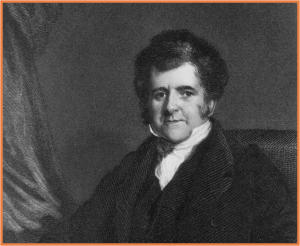
Fig. 2.
- Bright was 37 when he introduced the description of what was then called “Bright’s disease”
- Bright worked at Guy's Hospital in London, with Hodgkin and Addison, at the forefront of clinical observation
Maybe it is interesting to parallel Bright's work with parallels other 19th-century medical breakthroughs:
- Like Louis Pasteur in bacteriology
- Rudolf Virchow's cellular pathology
- William Osler's systematic clinical approach
3) the “critical mass” effect
One
aspect
that
is
hard
to
judge
from
Malpighi’s
environment,
whereas
it
is
clearly
present
in
Bright’s
environment
is
the
concentration
of
medical
talent
in
the
London's Medical Ecosystem, with consequent competitive medical research environment (motivating new observations).
Conclusions
Though
the
analysis
of
these
two
cases
has
not
received
all
the
systematic
dissection
they
deserve,
a
preliminary
conclusion
is
that
the
genius
of
a
researcher
is
not
the
only
prerequisite
for
enduring
innovations
in
science
and
medicine:
the
availability
of
new,
underused
technologies
is
very
relevant,
as
well
as
a
proper
cultural
mileau
with
some
competitiveness
and
“critical
mass”
is
possibly
necessary.
We’ll
analyze
in
the
following
issues
other
case
studies
to
verify
these
assumptions.
The
International
Association
for
the
History
of
Nephrology
(IAHN)
is
set
to
enhance
its
scholarly
outreach
in
December
2024,
introducing
a
comprehensive
book
review section that promises to bridge traditional academic publishing with digital research frontiers.
The
new
section
will
not
only
spotlight
recent
publications
but
also
explore
the
dynamic
digital
landscape
of
medical
history
research.
Of
particular
interest
is
the
rapidly evolving world of specialized blogs and online resources that are transforming how researchers access and share historical medical knowledge.
IAHN BULLETIN EXPANDS COVERAGE WITH BOOK
REVIEWS AND DIGITAL RESOURCES
Janusz Ostrowski




Department of Translational Medical Sciences,
Univ. of Campania “L. Vanvitelli”, Naples, Italy
Davide Viggiano

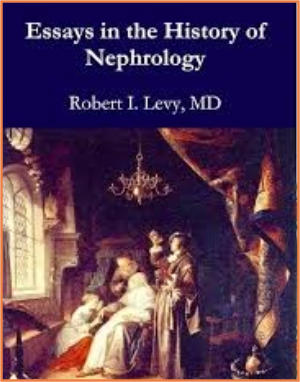
Fig. 1.
Recent Publication Highlights
Robert
I.
Levy's
"Essays
in
the
History
of
Nephrology,"
published
in
2018
by
Sam
Sapozhnik
Publisher,
stands
out
as
a
significant
contribution
to
the
field.
Part
of
the
prestigious
Studies
in
Medicine,
History
and
Culture
series,
the
book
offers
a
deep
dive
into
18th-20th
century
medical
history.
Its
10
chapters
provide
an
intricate
exploration
of
nephrology,
with
a
particular
focus
on
influential
figures
like
Richard
Bright,
Dover,
Osler,
and
Basham.
A
notable
feature
of
the
book
is
David
Levy's
scholarly
introduction,
which
offers
a
fascinating
linguistic
exploration
of
the
term
"kidneys"
(kelayote)
in
the
Talmud—a
linguistic
nuance
that
will
intrigue
medical
historians and language scholars alike
Digital Research Resources
For researchers seeking accessible historical information, two online resources stand out:
Wikipedia's
History
of
Nephrology
(Italian
Edition):
While
currently
available
only
in
Italian,
this
comprehensive
essay
traces
kidney-related
medical
knowledge
from
biblical
times
to
the
modern
era.
The
site
offers
an
easily
translatable overview of nephrology's historical development.
https://it.wikipedia.org/wiki/Storia_della_nefrologia
History
of
Nephrology
Blog
by
Neil
Turner:
Launched
in
2009,
this
blog
has
been
a
valuable
resource
for
nephrology
historians.
Though
inactive
since
2017,
its
archives
contain
a
wealth
of
illustrated
posts
covering
various aspects of nephrology's historical landscape.
https://historyofnephrology.blogspot.com/
These
digital
platforms
demonstrate
the
evolving
nature
of
medical
historical
research,
offering
researchers
unprecedented access to specialized knowledge and visual documentation.
As
the
IAHN
continues
to
expand
its
scholarly
reach,
this
new
approach
promises
to
connect
traditional
academic
publishing
with
the
dynamic
world
of
digital
scholarship,
providing
readers
with
a
more
comprehensive view of medical history.

KEYNOTE LECTURES
Disaster of the century, 2023 Türkiye earthquake: Dialysis in children with crush injuries and our experiences with kidney care
Ayse Balat
Department of Pediatric Nephrology & Rheumatology, School of Medicine, Gaziantep University, Gaziantep, Turkiye
On
February
6,
2023,
11
provinces
of
Turkiye
were
affected
by
consecutive
7.7
and
7.6
magnitude
earthquakes.
In
this
disaster
of
the
century,
53,537
people
lost
their
lives,
and
107,213
were
injured.
Basic
infrastructures,
including
hospital
buildings,
were
damaged.
Cold
weather
conditions,
collapses,
and
road
cracks
made
transportation
and
initial
rescue
efforts
difficult.
Nine
hundred-three
children
were
injured
in
this
earthquake
(average
age
11.62
years).
Data
were
collected
under
the
leadership
of
the
Turkish
Pediatric
Nephrology
Association,
and
the
most
extensive
information
on
pediatric
kidney
disasters
was
obtained
after
an
earthquake.
The
data
demonstrated
that
the
average
time
spent
under
the
rubble
for
children
was
13
hours
(interquartile
range
32.5,
max
240
h).
Of
the
32
children
who
stayed
under
the
rubble
for
more
than
120
hours,
31
survived,
and
one
child
was
rescued
ten
days
later
and
survived.
Amputation
was
performed
in
96
of
425
patients
who
underwent
surgery.
Crush
syndrome-related–acute
kidney
injury
(Crush-AKI)
developed
in
314
cases
(36%
of
all).
A
hundred
eighty-nine
of
them
received
kidney
replacement
therapy.
The
cases
that
developed
crush-AKI
were
over
15
years
of
age,
had
creatine
phosphokinase
(CK)
≥20
950
U/L,
time
under
rubble
≥10
h
and
the
intravenous
fluid
volume
given
first
day
<
3000–4000
mL/m2
body
surface
area.
Unfortunately,
22
children
died.
Twenty
of
these
were
cases
that
developed
crush-AKI and died within the first four days of admission.
In
this
lecture,
general
demographic
data
of
child
victims
in
the
earthquake,
risky
patients
for
AKI,
the
preferred
dialysis
modality,
challenges
in
dialysis
management and dialysis-related problems in children with crush injury will be discussed.
History of the renin-angiotensin-aldosterone system
Raymond Ardaillou
Honorary permanent secretary of the “Académie nationale de médecine”, France
The
history
of
the
renin-angiotensin-system
is
a
“success
story”
that
teaches
us
a
lot
of
evidences:
1-
An
initial
observation
made
at
the
end
of
the
19th
century
remained
forgotten
during
a
century
while
it
is
at
the
origin
of
efficient
new
therapies
and
a
better
knowledge
of
renal
and
cardiovascular
physiology;
2-
This
is
an
example
of
translational
medicine
to
which
have
contributed
clinicians
as
well
as
pharmacologists
and
biochemists;
3-
these
progresses
were
due
to
unexpected
discoveries
as
much
as
long
term
works.
In
1898,
R
Tigerstedt
called
renin
a
product
secreted
by
the
kidney
that
could
raise
blood
pressure.
It
was
not
until
1934
with
H
Goldblatt
that
it
was
shown
that
renal
ischemia
caused
the
secretion
of
this
substance;
then
the
discoveries
followed
with
the
demonstration
by
Argentina
and
American
researchers
that
the
hypertensive
substance
was
not
renin,
but
an
oligopeptide
that
they
called
angiotensin
while
renin
was
an
enzyme
acting
on
a
hepatic
substrate,
angiotensinogen
which
earned
LF
Leloir
the
Nobel
prize
(1970).
Then,
I
Page
synthesized
angiotensin
and
LT
Skeggs
showed
there
were
2
angiotensins,
an
inactive
decapeptide
(Ang
I)
and
a
hypertensive
octapeptide
(Ang
II).
In
parallel,
T
Reichstein
in
Basel
(Nobel
Prize
1950)
extracted
a
steroid
from
beef
adrenals
that
he
called
aldosterone
and
demonstrated
as
a
powerful
sodium
retention
substance.
The
next
step
was
the
discovery,
by
LT
Skeggs,
of
angiotensin-converting
enzyme
(ACE)
transforming
Ang
I
into
Ang
II
(1953).
The
knowledge
of
the
system
was
rapidly
expanding
with
the
discovery
of
Ang
II-type
1
receptor
(AgT1R)
and
its
cellular
signaling
pathway
allowing
aldosterone
to
be
included
in
the
system
since
it
was
released
from
adrenals
via
Ang
II
stimulation.
The
following
progresses
were
bidirectional:
1-
a
better
knowledge
of
each
component
of
the
system;
2-
the
discovery
of
new
components.
Renin,
ACE
were
sequenced
and
cloned
(P
Corvol,
1988).
Inhibitors
of
ACE
(captopril)
and
of
AgT1R
(sartans)
controlling
blood
pressure
were
synthesized.
Transactivation
of
EGFR
and
TGFβ-R
was
implied
in
the
cell
effects
of
Ang
II.
In
parallel,
a
lot
of
new
components
of
the
system
appeared:
ACE2,
AgT2R,
new
metabolites
as
Ang
1-7
acting
on
Mas
receptor,
Ang
III
and
Ang
IV
with
their
own
effects.
In
parallel,
knowledge
of
aldosterone
progressed
with
the
discovery
of
its
dual
effect
of
sodium
retention
and
potassium
excretion,
its
genomic
and
non-genomic
pathways,
its
inhibitors
(steroidal
and
non-steroidal),
the
role
of
11β-steroid
deshydrogenase
in
its
binding
to
the mineraloid receptor…The history of such a complex system is not finished and new developments appeared particularly in the treatment of renal fibrosis.
Theory and Practice in Byzantine Uroscopy
Mario Lamagna
Dipartimento di Studi Umanistici, Università degli Studi “Federico II”, Napoli, Italy; email: mario.lamagna@unina.it
Introduction:
Uroscopy
is
the
branch
of
medicine
in
which
the
contribution
of
the
Byzantine
physicians
was
the
greatest:
now
we
have
a
large
number
of
works
on
this
subject,
dating
from
the
fifth
to
the
fourteenth
century
AD.
Although
writing
in
form
of
treaties
favors
forcibly
the
theoretical
aspect
of
this
science,
it
is
possible to find in these texts elements of physician practice,
Objective:
A
careful
reading
of
these
writings
provides
practical
information
on
the
activity
of
Byzantine
physicians
in
the
observation
of
urine:
the
reference
is
primarily
to
the
manipulation
of
the
matula,
and
particularly
to
heating
and
agitating
the
liquid
contained
therein.
Thus
we
find
quotations
of
real
byzantine
laboratory experiments, based on the belief that the simple observation of the liquid is misleading.
Methods:
First,
in
our
works
we
find
reflected
the
practice
and
theory
of
Hippocratic
Prognostic
and
Aphorisms.
Byzantine
uroscopy
writers
saw
in
Hippocrates
the
initiator
of
their
science
and
they
accepted
with
enthusiasm
his
views:
Hippocrates
had
established
once
and
for
all
the
principles
upon
which
the
doctor
should operate his urine test: color, viscosity, sediment, behavior over time.
Results:
Of
great
interest
is
the
mention
of
the
authors
of
the
testimonies
gathered
from
everyday
medical
practice.
But,
when
they
are
collected
to
test
certain
theoretical notions, they must have a degree of likelihood and plausibility for the reader such as to reproduce the real observations done by these physicians.
Discussion:
We
cannot
go
overboard
in
searching
a
practical
reflected
in
the
clinical
cases
tales.
As
a
form
of
literature,
they
have
a
certain
degree
of
conventionality in which some elements of the narrative always return equal.
Conclusion: The theorical treatises by Magnus, Stephanus, Theophilus and Johannes Actuarius can inform us also about the praxis of Byzantine uroscopy.
The kidney: a bridge between past, present and future in the green circular economy
Vincenzo Savica
Accademia Peloritana dei Pericolanti at University of Messina, Italy. Email: visavica@tin.it
The
kidney
can
be
considered
as
a
“Green
Organ”
through
the
production
of
urine.
Link
betweeen
urine
and
medicine
dates
back
to
several
centuries
ago
when
it
was
deemed
essential
in
treating
various
diseases
and
was
used
for
practical
applications
including
those
non-medical.
Bouatra
(2013)
identified
445
and
quantified
378
urine
metabolities
species
found
in
urine,
which
respond
to
some
important
principles
of
green
chemistry.
The
evidence
that
an
adult
on
a
typical
western
diet
urinates
about
1500
ml
a
day
and
500
liters
a
year,
enough
to
fill
three
standard
bathtubs
justifies
the
interest
in
it.
Urine
is
involved
in
the
production
of
water,
electric
energy,
fuel,
fertilizer,
biobriks,
and
resistant
concrete
especially
for
future
Lunar,
Mars
bases,
as
well
as
for
home
construction.
The
urine
of
100
thousand
people
can
produce
8686
thousand
liters
of
drinkable
water,
and
250
KW
of
electricity
per
day.
Through
the
process
of
electrolysis,
a
cell
can
separate
nitrogen,
water
and
hydrogen
from
urine
which
could
represent
a
valid
and
safe
green,
sustainable
and
inexhaustible
souce
of
bioenergy.
It
has
been
discovered
that
additive
from
urine
can
allow
us
to
obtain
petrol,
saving
35%
in
cars
and
60
%
in
fuel
powered
diesel
vehicles
and
80%
in
gas
vehicles.Urine
can
be
used
as
fertilizers
in
agriculture
reducing
a
large
exdpenditure
of
CO2
and
electricity
also
on
the
Moon
and
Mars
bases
and
reduction
of
qcuifers.
The
dust
of
lunar
soil
(regolith)
mixed
with
urea
from
urine
produces
its
geopolymerization
which
can
be
used
in
creating
bricks
resistant
to
compression,
freezing
and
fire
with
slow
thermal
conductivity,
low
shrinkage
rate
and
high
shielding
capacity
to
radiation.
A
more
resistant
thermal
isolant
bricks
for
civil
buildings
could
be
created
reducing expenditure of CO2 and electricity. The urine of man and animals could represent an innovative approach to reaching efficient green goals.
Communications
A Master and Pioneer of Sleep Medicine: Elio Lugaresi
Rosa Maria De Santo
School of Integrated Gestalt Psychotherapy, Torre Annunziata, Naples, Italy, Email: bluetoblue@libero.it
In
1953
Aserinsky
and
Kleitman
published
in
Science
a
landmark
paper
on
“regularly
occurring
periods
of
eye
motility
and
concomitant
phenomena”.The
research
on
sleep
and
its
disorders
progressed
on
the
shoulders
of
giants
as
Nathaniel
Kleitman
(Chicago),
William
C.
Dement
(Stanford),
Henri
Gastaut
(Marseille),
Elio
Lugaresi (Bologna) Christian Guilleminault (Stanford) and Colin Sullivan (Sydney).
Elio
Lugaresi
(Castiglione
di
Cervia,
July
1,
1926
–
Bologna,
December
22,
2015)
turned
sleep
medicine
into
one
of
the
most
dynamic
fields
of
research
and
cure.
Lugaresi
graduated
in
Bologna
in
1952.
After
completing
a
residency
in
neurology
at
the
same
university,
in
1956
-1957
was
trained
in
polysomnography
(PSM)
by
Henri
Gastaut.
He
linked
clinical
observations
to
PSM
data
and
after
returning
to
Bologna
started
with
Giorgio
Coccagna
and
others
PSM
registrations
using
a
rudimentary
electroencephalograph.
The
group
produced
seminal
papers
on
(i).
pulmonary
pressures,
breathing
and
sleep,
(ii).
restless
leg
syndrome
and
myoclonus,
(iii.)
snoring
and
hypertension
that
led
to
the
identification
of
sleep
apnea
as
risk
factor
for
cardiovascular
disease,
(iii)
Fatal
Familial
Insomnia.
In
1967
organized
in
Bologna
the
First
International
Congress
on
Sleep
Medicine
(Lugaresi
CV
at
http://ebook>browse.com/cv-elio-lugaresi-pdf--d186019098).
The
paper
on
snoring, established a priority since it suggested “that heavy, constant snoring has physio-pathological implications for the cardio-circulatory apparatus” (1).
Lugaresi
was
driven
by
the
Renaissance
idea
that
all
had
to
move
from
the
observation
of
man.
He
worked
with
success
even
in
the
emeritus
days
producing
more
than
500
papers
and
chapters
which
have
granted
a
long
list
of
awards
and
honors.
William
C.
Dement,
referring
to
originality
of
his
work
argued
“It
is
not
clear what would have happened if an Italian neurologist, Elio Lugaresi, had not become very interested in obstructive sleep apnea” (2).
References
1
.
Lugaresi E. Snoring. Electroencephalogr Clin Neurophysiol. 1975;39 (1): 59-64.
2
.
Dement WC. The study of human sleep: a historical perspective. Thorax 1998; 53 (Suppl.3): S2-7.
Timelines for the history of gout from the fifth century BCE to the end of the fourteenth century CE: the contribution of Rufus of Ephesus
Carmela Bisaccia1, Natale Gaspare De Santo2, Luca Salvatore De Santo3
1Istituto
Mazzini
Naples,
2Emeritus
Professor
of
Nephrology,
University
of
Campania
Luigi
Vanvitelli,
Naples,
3Division
of
Heart
Surgery,
University
of
Campania
Luigi Vanvitelli, Naples (all in Italy)
Gout,
from
Latin
gutta
(drop),
is
the
oldest
recorded
inflammatory
arthritis.
It
is
a
common,
complex,
systemic
disease
due
to
deposition
of
sodium
monourate
crystals
in
peripheral
joints
and
periarticular
tissues
driven
by
hyperuricemia.
Literature
spans
from
2760
BC
to
Hippocrates,
to
Giovanni
Battista
Morgagni
(1682-
1771),
to
Alfred
Garrod
(1819-1907),
to
Nobel
laureate
Gertrud
B.
Elion
(1988).
Rufus
of
Ephesus
(98-138
CE)
(1),
Rufus
a
gouty
person
(2),
was
a
prominent
physician
who
lived
and
flourished
in
the
late
1st
and
early
2nd
century
CE.
Probably
he
lived
at
the
time
of
Trajan
(98-117
AD).
Rufus
was
quoted
extensively
by
Galen,
Oribasius,
Aetius
of
Amida,
Paul
of
Aegina,
and
translated
by
Rhazes
into
Arabic.
He
wrote
a
treatise
De
Podagra,
in
Latin,
in
37
chapters,
where
gout
is
due
to
a
toxic
humour.
The
book
has
been
translated
into
French
(Editio
princeps)
by
Daremberg
and
Ruelle
(3).
We
have
for
the
first
time
rendered
De
Podagra
into
English.
Rufus
adopted
the
four
humours
and
practiced
a
medicine
based
on
the
identification
of
their
imbalance
and
restoration.
He
was
gouty
and
introduced
the
theory
of
metastasis
of
gout
leading
to
convulsion,
confirmed
by
recent
studies.
Podagra
was
curable
“at
onset,
however,
when
inflammation
sets
in,
there
are
reasons
to
worry”.
Diagnosis
is
an
important
step
that
can
be
eased
by
the
narrative
of
the
patients
on
the
onset
of
pain
by
excluding
recent
bumping.
If
this
was
not
the
case,
the
patient
“must
be
immediately
put
on
a
diet,
given
an
enema
and
bloodletting”.
Exercise
is
important,
any
type
of
exercise
“walking,
running,
horse riding, massaging the thigh and below”. Massages first dry, then with oil. Baths are helpful “when the body suffers (insistent) pain”.
We will discuss some passages on therapy with emphasis on remedies originating from plants.
References
1. Bujalková M. Rufus of Ephesus and his contribution to the development of anatomic nomenclature. Acta med-hist Adriat 2011;9(1);89-100.
2. Copeman WSC. A short History of the Gout. Berkeley, University of California Press, 1964.
3. Daremberg Ch. and Ruelle Ch. É. Oeuvres de Rufus d‘Éphèse, Paris, Imprimerie
Dimitar Nenov (1933-2024), Professor of Renal Medicine at the University of Varna behind the Iron Curtain
Natale
G.
De
Santo1,
Guido
Bellinghieri2,
Giovanbattista
Capasso3,
Nicola
De
Napoli4,
Vincenzo
Savica2,
Teresa
Papalia4,
Pantaleone
Sergi5,
Luigi
Iorio6,
Amalia
Virzo7, Katarina Derzsiova8, Halima Resic9, Athanasios Diamandopoulous10, Veselin Nenov11
1
University
Luigi
Vanvitelli
Naples,
Italy;
2
Division
of
Nephrology
University
of
Messina,
Italy;
3
Scientific
Dirrector
of
Biogem,
Ariano
Irpino,
Italy;
4
Division
of
Nephrology
Annunziata
Hospital
Cosenza,
Italy;
5
Migration
Center
University
of
Calabria
at
Rende;
6
Division
of
Nephrology
Cassino
Hospital,
Italy;
7
Founder
of
Ph.D.
Course
in
Ecology
at
the
University
Federico
II,
Naples,
Italy;
8
Nephrological
Laboratory,
University
hospital
of
Louis
Pasteur,
France;
9
Louros
Foundation,
Athens,
Greek;
10
Division
of
Nephrology,
University
of
Sarajevo,
Bosnia
and
Herzegovina;
11Consultant
in
General
Internal
Medicine,
East
Surrey
Hospital
Redhill,
London, UK
Dimitar
Nenov
was
born
on
May
2,
1933
in
Pobit
Kamak.
He
was
11
years
old
when
Bulgaria
entered
in
the
USSR
orbit
following
the
invasion
of
the
soviet
army
and
the coup d’etat of September 9, 1944 (Socialistic Revolution). Following that event the properties of the family were confiscated because of state collectivism.
He
received
the
MD
at
the
University
of
Sofia
in
1957,
specialized
in
Internal
Medicine
in
1962
and
moved
to
the
Medical
University
of
Varna.
He
was
a
teaching
assistant
(1962),
and
nephrologist
in
training
at
the
universities
of
Prague,
London,
later
Bologna,
Parma
and
Moscow.
He
was
the
founder
of
the
division
of
nephrology
in
Varna
(1973),
and
full
professor
of
medicine
(1985-2001).
He
mentored
ten
associate
professor
and
served
as
vice
rector
and
member
of
the
national
committee conferring university scientific degrees.
He
was
a
founder
of
BANTAO
(Balkan
Cities
Association
of
Nephrology,
Dialysis,
Transplantation
and
Artificial
Organs).
This
association
of
cities,
not
of
nations,
granted
cultural
exchanges
between
scientists
in
the
Balkan
area
during
wars
following
the
dissolution
of
Yugoslavia.
He
was
its
first
president,
founder
and
first
Editor of the BANTAO Journal.
In
1991
Nenov
started
the
Varna
Kidney
Foundation
and
the
Annual
Varna
International
Seminars
on
“Hot
Topics
in
Nephrology”
and
the
journal
Aktualna
Nephrologia.
He
had
intense
exchanges
throughout
USA
and
Europe,
special
relations
with
the
universities
of
Naples
and
Messina
and
the
Nephrological
Units
at
Cosenza
and
Cassino
Hospitals.
He
was
a
co-founder
of
the
International
Federation
of
Kidney
Foundations.
After
retirement
he
directed
a
private
dialysis
unit
till
2022 and collaborated with the Italian Institute of Philosophical Studies for Survival is Not Enough. He died at the age of 90 on February 2, 2024
Professor Ferdinand Démant (1911 -1988): Founder of the European Society for Paediatric Nephrology
Katarína Derzsiová
University Hospital of L. Pasteur, Košice, Slovakia
Professor
Ferdinand
Démant
-
born
in
Budapest,
deceased
in
Košice
-
epitomized
the
academic
physician:
paediatrician,
organiser,
scientist,
and
educator.
He
was
one
of
the
intelligent
group
who
founded
the
European
Society
for
Paediatric
Nephrology
(1967).
As
a
member
of
the
committee
of
this
Society,
he
organized
a
congress
in
the
High
Tatras
(1973).
He
graduated
from
the
Faculty
of
Medicine,
Charles
University
in
Prague
(1935).
After
graduation
he
worked
at
the
Department
of
Paediatrics
under
Professor
Jiří
Brdlík
(1935-1939),
the
Nestor
of
Czechoslovak
paediatrics,
and
later
under
Professor
Jaroslav
Procházka,
the
Nestor
of
infectology.
The
establishment
of
the
Faculty
of
Medicine
in
Košice
(1948),
as
a
branch
of
Comenius
University
in
Bratislava,
was
a
milestone
in
improving
the
quality
of
care
for
children.
The
Children's
Clinic
was
established,
and
Professor
Démant
(1948-1976)
became
its
head.
P.J.
Šafárik
University
in
Košice
was
established in 1959.
Demant
was
tireless,
he
was
the
author/co-author
of
more
than
400
publications,
40
books,
and
contributed
a
chapter
on
nephrology
to
the
Czechoslovak
Textbook
of
Paediatrics.
He
educated
many
generations
of
paediatricians,
PhDs
in
paediatrics,
and
professors:
Štefan
Sršeň,
Ján
Jacina,
Oľga
Pavkovčeková.
Vojtech Kluka, and Eva Matheová.
Démant
was
the
Dean
of
the
Faculty
of
Medicine
in
Košice
(1950-1953),
a
regional
expert
in
paediatrics,
built
a
network
of
children's
wards
within
district
hospitals,
founded
the
Eastern
Slovak
Paediatric
Section
of
the
J.
E.
Purkyně
Society,
the
tradition
of
the
so-called
"School
of
Paediatric
Nephrology
Košice",
was
the
editor
of
the
journal
Czechoslovak
Paediatrics
and
a
member
of
the
committee
of
the
Slovak
Paediatric
Society.
Since
1961,
he
was
a
member
of
the
Czechoslovak
Commission
for
Cooperation
with
the
UNESCO.
He
became
honorary
member
of
paediatric
societies
of
France
and
Germany,
in
the
Societe
de
Medicine
de
Paris
and in the Deutsche Gesellschaft für Kinderheilkunde.
Homer William Smith: His Life And Scientific Achievements
Jan Kurkus1, Janusz Sadowski2, Janusz Ostrowski3
1
Department
of
Nephrology,
University
Hospital
Lund,
Sweden;
2
Department
of
Renal
and
Body
Fluid
Physiology,
Mossakowski
Medical
Research
Centre,
Polish
Academy of Sciences, Warsaw, Poland; 3 Department of the History of Medicine, Centre of Postgraduate Medical Education, Warsaw, Poland
Seven
decades,
roughly,
have
passed
since
Homer
W.
Smith,
a
prominent
American
physiologist,
published
his
crucial
textbooks
(The
Kidney:
Structure
and
Function
in
Health
and
Disease,1951,
and
Principles
of
Renal
Physiology,
1956)
which
provided
the
background
for
the
development
of
modern
nephrology.
Born
1895
in
Denver,
Colorado
as
the
youngest
of
six
children,
at
the
age
of
five
he
developed
stammering,
which
led
to
social
isolation
but
at
the
same
time
helped
arouse his interest in science
He
obtained
high
school
education
in
Denver.
At
that
time
already
he
performed
scientific
experiments
in
chemistry,
physics
and
microbiology
but
also
dissected
cats and dogs exploring internal organs; this reflected his early fascination in biology.
With
the
outbreak
of
World
War
I,
Homer
joined
the
army
and
served
as
chemist
in
the
Chemical
Warfare
Station
of
the
American
University
in
Washington,
D.C.
After
the
war
he
started
studies
at
Johns
Hopkins
University
School
of
Hygiene
and
Public
Health
and
graduated
1921
as
D.Sc.
in
chemistry.
Afterwards,
over
three
years
he
chaired
the
Department
of
Physiology
at
the
University
of
Virginia
and
simultaneously
over
several
summers
studied
renal
physiology
of
fresh-
and
salt-
water
fish
(later
also
reptiles
and
mammals)
The
resulting
evolutionary
and
philosophical
vision
was
later
presented
in
the
publications
Komongo;
The
Lungfish
and the Padre (1932) and From Fish to Philosopher (1953).
Homer
W.
Smith
was
appointed
professor
of
Physiology
and
Director
of
the
Physiological
Laboratories
at
New
York
University
School
of
Medicine
in
1928
and
was
active
there
until
his
retirement
in
1961.
Here
he
created
a
team
of
famous
researchers
and
his
laboratory
became
an
international
centre
of
renal
physiology.
He
postulated elimination of barriers between the preclinical and clinical sciences.
Homer
W.
Smith
established
the
methodology
of
clearance
technique
for
non-invasive
assessment
of
kidney
function:
a
crucial
approach
at
the
time
of
rather
limited knowledge of renal physiology. Application of the technique contributed to significant progress in understanding kidney function.
Homer
W.
Smith
died
of
a
cerebral
haemorrhage
in
1962:
this
was
a
closing
point
of
the
ʺSmithian
Era
of
Renal
Physiologyʺ.
The
Homer
Smith
Award
established
by the American Society of Nephrology is presented annually since 1964.
Zbigniew Fałda (1930-2021), A Physician From Poland And His Professional Contacts With The Leaders Of World Nephrology
Janusz Ostrowski1, 5, Bolesław Rutkowski2, 5, Ryszard Gellert3, Jan Kurkus4
1
Department
of
the
History
of
Medicine,
Centre
of
Postgraduate
Medical
Education,
Warsaw,
Poland;
2
Department
of
Nephrology,
Transplantology
and
Internal
Medicine,
Gdansk
Medical
University,
Poland;
3
Department
of
Nephrology,
Internal
Medicine
and
Family
Medicine,
Centre
of
Postgraduate
Medical
Education,
Warsaw, Poland; 4 Department of Nephrology, University Hospital Lund, Sweden; 5 Historical Section of the Polish Society of Nephrology
Dr.
Zbigniew
Fałda
is
a
prominent
figure
in
Polish
dialysis
therapy,
credited
with
pioneering
haemodialysis
treatment
in
Warsaw
in
1959
and
contributing
to
early
trials
of
peritoneal
dialysis
in
chronic
kidney
disease
in
1962.
His
significant
input
into
Polish
nephrology,
particularly
in
dialysis,
is
notable,
especially
during
the
formative two decades of dialysis therapy development in the country.
Born
in
Warsaw,
Dr.
Fałda
obtained
his
medical
diploma
from
the
Faculty
of
Medicine
at
the
Medical
University
of
Warsaw
in
1954.
He
commenced
his
career
at
the
1st
Department
of
Internal
Medicine,
dedicating
25
years
of
his
professional
life
to
this
institution
under
the
leadership
of
Professors
Andrzej
Biernacki
and
Tadeusz Orłowski, honorary member of the IAHN.
In
1962,
Dr.
Fałda
underwent
training
at
the
Nephrology
Clinic
and
Dialysis
Centre
at
Lund
University
in
Sweden,
under
the
guidance
of
the
renowned
pioneer
of
dialysis therapy, Professor Nils Alwall. He also had the privilege of caring for Professor Alwall during his visit to Poland.
In
1965,
Dr.
Fałda
joined
the
Nephrology
Clinic
at
the
University
of
Washington
in
Seattle
under
the
guidance
of
legendary
Belding
Scribner.
His
expertise
in
haemodialysis
led
to
his
pivotal
role
in
the
care
of
Clyde
Shields,
Professor
Scribner's
first
patient
to
undergo
chronic
renal
replacement
therapy
through
haemodialysis in March 1960.
During
his
tenure
in
the
US,
Dr.
Fałda
collaborated
closely
with
the
renowned
Henry
Tenckhoff
and
treated
Tenckhoff's
second
patient
with
home
peritoneal
dialysis.
In
November
1978,
Dr.
Fałda
pursued
a
research
internship
at
the
Nephrology
Centre
in
Hannover
Münden,
West
Germany,
under
Professor
Eduard
Quellhorst.
He
then
settled
in
Germany,
working
at
the
Mühlengrud
Clinic
in
Bad
Wildungen,
where
he
served
as
deputy
head
and
eventually
as
department
head
until
his
retirement in 1984.
Dr. Fałda's role in the development of renal replacement therapy in Poland is invaluable and worth highlighting.
Correlation between neuro-visual symptoms and the oliguric and polyuric phase of AKI, according to the Hippocratic Treatise "On Diseases"
Athanasios Diamandopoulos
Louros Foundation for the History of Medicine, Greece
Introduction:
The
treatise
'Regiment'
from
the
Corpus
Hippocraticum
is
one
of
the
most
studied,
although
its
authorship
is
disputed.
One
passage
there
(3.254)
caught
our
interest.
It
reads:
"If
the
disease
originates
in
the
brain,
the
head
feels
numb
at
first,
the
patient
urinates
frequently,
and
otherwise
shows
symptoms
of
strangury.
This
lasts
for
nine
days,
and
when
serum
or
mucus
runs
from
the
nose
or
ears,
the
disease
subsides
and
the
strangury
ceases.
The
patient
passes
abundant
white
urine
without
pain
for
a
period
of
twenty
days,
the
headache
disappears,
but
when
he
observes
[something]
he
notices
that
his
vision
is
impaired"
We were unable to trace any detailed comments on this.
Objective: To investigate any scientific basis for the description of this unnamed condition.
Methods:
We
compared
the
symptoms,
course
and
prognosis
of
the
disease
as
described
in
the
above
passage
from
the
Regiment
with
the
current
literature
on
AKI, its symptoms and outcome.
Results:
There
is
a
very
close
relationship
between
all
the
entities
of
the
ancient
text
and
the
current
knowledge.
We
elaborate
on
this
relationship
by
pointing
out
each right and wrong in the ancient writer's thesis.
Conclusion:
The
author
of
the
"Regiment",
without
any
knowledge
of
the
structure
and
pathology
of
the
kidney
and
of
the
causes,
symptoms
and
underlying
pathological
changes
of
AKI
in
all
phases
of
the
disease,
was
surprisingly
roughly
correct
in
his
statements.
Even
if
we
allow
for
an
astute
clinical
observation,
still,
in an era before mega-data, it is difficult to explain the almost perfect description of the condition.
Gout from Corpus Hippocraticum to Renaissance: 1. Corpus Hippocraticum
Natale G. De Santo1, Carmela Bisaccia2, Luca S. De Santo3
1Emeritus
Professsor,
Campania
University“
Luigi
Vanvitelli”,
Naples,
Italy
;email:natalegaspare.desanto@unicampania.it;2Istituto
Mazzini,
Naples,I
taly;
3Division
of Heart Surgery University Luigi Vanvitelli and Monaldi Hospital, Naples, Italy
Gout
has
been
present
since
early
human
existence.
The
association
of
humours
with
causation
stems
from
Hippocrates
(480-360
BCE).
In
the
Corpus
Hippocraticum
joint
diseases
have
been
described
as
arthritis,
arthritika,
arthron,
ponoi,
oidemata,
and
eparseis
of
the
joints,
kedmata
and
ischias
(Simon
Byl).
Podagra
was
seen
as
the
most
severe
of
all
joint
diseases,
a
long
lasting
disease
that
becomes
chronic,
but
is
not
lethal,
and
affects
more
young
person
than
the
elderly.
It
was
clear
to
Hippocrates
that
when
podagra
is
associated
with
tophi
it
is
nearly
incurable.
Even
a
skilled
physician
could
not
help
and
warned
against
the
use
of
drugs
to
relieve
pain.
The
disease
is
caused
by
an
accumulation
of
phlegm
linked
to
an
excess
of
foods.
“Gout
is
mentioned
in
the
Corpus
20
times.
Podagra
is
quoted
5
times,
podagrao
and
podagriao
(to
be
afflicted
with
gout)
respectively
1
and
4
times,
podagrikos
(relative
to
gout)
10
times”.
In
the
Corpus
there
are
314
mentions of the word arthron (joint).
In
Aphorisms,
gout
is
mentioned
5
times:
“Eunuchs
do
not
take
gout,
nor
became
bald”
(VI,28);
“A
woman
does
not
take
gout
unless
her
menses
be
stopped”
(VI,
29),
“A
youth
does
not
get
gout
before
sexual
intercourse”(VI,
30),
“In
gouty
affections
inflammation
subsides
within
40
days”
(VI,
40),
“Gouty
affections
become
active
in
Spring
and
Autumn”
(VI,55).
Gout
is
also
defined
in
Affections
of
the
parts
where
details
on
therapy
are
given.
In
Prorrhetic
II
tophi
are
described
as
epiromata
for
the
first
time
along
with
the
difficulty
of
healing
the
elderly
patients
with
concretions
“they
are
beyond
the
reasons
of
human
art”,
whereas
the
young gouty patient without tophi “will be definitely cured provided that he is under the cure of an astute physician”.
Etymologies or Origins by Isidore of Seville (codex 2, SS. Trinità Abbey – Cava dei Tirreni). “De Medicina” – Book VI
L. Iorio, A. Aliotta
Division of Nephrology and Dialysis, “S. Scolastica“ Hospital, Cassino, Italy. Email: luigiiorio52@gmail.com; University of Maryland University College- Europe
The
Codex
2,
kept
in
the
Archives
of
the
Benedictine
Abbey
of
SS.
Trinità
of
Cava
dei
Tirreni
(Salerno,
Italy),
is
one
of
the
earliest
copies
of
the
Etymologies.
It
was
compiled
at
the
“Scriptorium”
of
Montecassino,
along
with
the
grammar
miscellaneous
contained
in
the
Paris
lat.
7530,
between
777
and
778
(1);
this
timeline
is
suggested
by
the
calendar
marking
the
“depositio”
of
the
abot
Potone
of
Montecassino,
who
became
abot
of
the
Abbey
SS.
Trinità
of
Cava
dei
Tirreni
from
779
to
796.
The
complete
manuscript
of
Isidore’s
Etymologies
consists
of
20
books,
concerning
the
entire
body
of
knowledge
of
that
era.
It
was
extremely
popular,
as
over
a
thousand
copies
of
it
have
been
preserved.
Many
complete
and
partial
editions
of
the
Etymologies
have
been
released
over
the
centuries.
One
of
the
latest
editions
was
published
by
UTET
under
the
supervision
of
Velastro
Canale
and
printed
in
2004
(2);
it
is
a
translation
of
the
very
ancient
Isidori
hispalensi
episcopi
Etymologiarum sive Originum Libri XX printed by W.M. Lindsay in Oxford in 1911 (3).
There
are
no
signs
that
Lindsay
consulted
the
Codex
2;
Lindsay
referred
to
an
edition
with
the
books
arranged
in
a
different
order;
indeed,
the
De
Medicina
is
reported in Book VI instead of Book IV (4). The Codex 2 was written in Latin with black ink and Beneventano – Cassinese font style, and features miniatures.
References
1
.
G. Orofino. I codici decorati dell’Archivio di Montecassino. Vol I, pag 19; Istituto Poligrafico e Zecca dello Stato. Roma 1994
2
.
Isidoro di Siviglia. Etimologie o Origini, Volume I e II a cura di Angelo Velastro Canale. Utet libreria. Torino 2004
3
.
Isidori hispalensis episcopi Etymologiarum sive Originum Libri XX, ed. W.M.Lindsay, 2 voll.,Oxford Clarendon Press., 1911
4
.
Leone Mattei-Cerasoli. Isidori. Etymologiarum libri XX . Incipit liber VI f.183-198; Badia di Cava, 2007
“Uremia” through medical literature in the 19th century
Kalientzidou Maria1, Stefanidis Ioannis2
1 Director of Nephrological Department, General Hospital of Kavala Greece; email: merinakali@hotmail.com; 2 University of Thessaly, School of Medicine, Greece
Introduction:
The
concept
of
uremia
took
many
years
to
develop.
Widespread
acceptance
of
uremia
did
not
occur
until
some
fifty
years
after
the
chemical
discovery
of
urea.
In
the
19th
century,
clinical
nephrology
had
not
been
established
as
a
specific
discipline
of
internal
medicine.
Still,
several
authors
have
made
major
contributions
to
the
understanding
of
renal
physiology
and
kidney
disease.
This
essay
aims
to
study
medical
editions
of
the
medical
literature
of
the
19th
century and describe their concept and concerns about uremia.
Method: Twelve editions of medical literature concerning uremia, published 1853-1915, six of English and six of French origin, were studied.
Conclusions:
Major
concerns
of
the
medical
community
of
the
time
according
to
the
authors’s
opinion
included:
a)
variously
described
nature
of
urea.
Is
urea
a
poison?
b)
what
is
uremia?
Emerging
strong
and
cumulative
testimony
that
retention
in
the
blood
of
“toxic”
agents
beyond
a
certain
time
will
cause
“morbid
effects”
was
noticed
c)
carbonate
of
ammonia
is
the
toxic
agent
which
resulting
from
decomposition
of
urea
in
the
blood
d)
experimental
findings
reported
after
bilaterally
nephrectomy
in
different
animal
species
concluded
that
urea
was
produced
in
the
body
and
excreted
by
the
kidney
e)
Bright’s
disease
is
the
affection
in
which
urea
is
most
frequently
retained
in
the
blood
f)
is
albuminuria
always
followed
by
uremia?
g)
Convulsions
caused
by
uremic
intoxication
in
acute
Bright’
s
disease and puerperal eclampsia are identical? Is there a common etiological origin? h) which might be the best treatment of uremia?
Epilogue:
Standing
at
the
exit
and
watching
the
labyrinth
of
thought
of
researchers
of
previous
generations
is
like
offering
us
Ariadne's
thread
to
enter
our
own
labyrinths and enjoy working in the present toward the future.
Antyllus’s account on the urinary catheterization and medical treatment of urolithiasis in al-Rāzī’s Kitāb al-Hāwī
Ahmet Acıduman1, Çağatay Aşkit2
1
Department
of
History
of
Medicine
and
Ethics,
Faculty
of
Medicine,
Ankara
University,
Ankara,
Turkey;
aciduman@medicine.ankara.edu.tr;
ahmetaciduman@yahoo.com;
2
Department
of
Ancient
Languages
and
Cultures,
Sub-Department
of
Latin
Language
and
Literature,
Faculty
of
Languages,
History and Geography, Ankara, Turkey
Introduction:
Abū
Bakr
Muḥammad
b.
Zakariyyā
al-Rāzī,
known
as
Rhazes
in
the
West,
was
one
of
the
most
important
physicians
and
philosophers
of
the
Islamic
world
in
the
Middle
Ages.
His
famous
work
Kitāb
al-Ḥāwī
fī
al-Ṭibb,
translated
into
Latin
as
Liber
Continens,
is
an
invaluable
source
for
the
history
of
medicine.
It
contains
quotations
from
many
authors
whose
works
have
not
survived
to
the
present
day
and
Rhazes’s
comments
on
them.
Antyllus,
a
famous
physician
and
a
surgeon of the ancient world, is one of these authors.
Objective:
To
analyze
the
Kitāb
al-Ḥāwī
and
to
present
the
fragments
of
Antyllus
on
urinary
catheterization
and
the
medical
treatment
of
urolithiasis,
which
are
not
covered
in
Mathias
Witt’s
comprehensive
article
in
which
Kitāb
al-Ḥāwī
was
analyzed
and
contributed
to
the
literature
with
Antyllus’s
writings
on
urolithiasis
and lithotomy.
Methods:
Both
the
printed
Arabic
and
Latin
copies
of
Kitāb
al-Ḥāwī
and
two
Arabic
manuscripts
were
analyzed.
First,
Antyllus’s
statements
on
the
pertinent
topics
were
identified.
Thereafter,
these
quotations
were
compared
with
each
other
and
translated
into
English.
The
results
are
then
discussed
in
the
light
of
the
relevant
literature.
Results:
Excerpts
of
Antyllus’s
writings
on
the
urinary
catheterization
and
medical
treatment
of
urolithiasis
are
found
in
the
Book
10th
of
Kitāb
al-Ḥāwī,
entitled
“on diseases of the kidneys, urinary tract, and others.”.
Discussion:
There
are
some
differences
between
the
Arabic
printed
copies
and
manuscripts
regarding
the
topics
analyzed
in
the
quotations
from
Antyllus,
as
well
as some differences between the Latin translations and the Arabic copies in terms of the relevant topics.
Conclusion:
This
limited
study
fills
a
gap
in
the
puzzle
by
discussing
the
quotations
in
various
copies
of
the
Kitāb
al-Ḥāwī,
which
contain
Antyllus’s
writings
on
urinary catheterization and the medical treatment of urolithiasis.
On the treatment of kidney and bladder in Ibn al-Jazzar’s Medicine for Poor and Destitute
Abdullah Yıldız1, Ayşe Kurtoğlu2, Ahmet Acıduman3
1
Faculty
of
Medicine,
Department
of
History
of
Medicine
and
Ethics,
Ankara
University,
Ankara,
Turkey,
dr.abdullahyildiz@hotmail.com,
abdyildiz@ankara.edu.tr;
2
Faculty
of
Medicine,
Department
of
History
of
Medicine
and
Ethics,
Ankara
University,
Ankara,
Turkey;
3
Faculty
of
Medicine,
Department
of
History
of
Medicine
and Ethics, Ankara University, Ankara, Turkey
Introduction:
Ibn
al-Jazzār
(d.
369/979)
was
a
significant
figure
in
Islamic
medicine.
He
produced
a
substantial
corpus
of
works,
with
one
of
his
most
notable
contributions
being
Tibb
al-Fuqarāʾ
wa
l-Masākīn
(Medicine
for
the
Poor
and
Destitute).
The
tradition
of
writing
for
the
poor
and
those
who
cannot
easily
access
medical treatment is considered an important one in the Middle Ages.
Objective:
The
main
purpose
of
this
study
is
to
analyze
the
chapter
titled
“treatment
of
the
kidneys
and
bladder”
in
al-Jazzār's
Tibb
al-Fuqarāʾ
wa
l-Masākīn
and
to
discuss it with the literature.
Methods: Tibb al-Fuqarāʾ wa l-Masākīn (MS Haraççioğlu 1126/1) has been translated into English, analyzed, and discussed with the literature.
Results:
After
stating
that
proper
nutrition,
drinking
fluids,
and
diuretic
beverages
are
generally
beneficial
for
kidney
pain,
al-Jazzār
provided
specific
treatment
recommendations
for
different
conditions.
These
recommendations
included
the
treatment
of
a
wide
range
of
problems,
such
as
kidney
pain,
kidney
and
bladder
stones,
wounds,
difficult
urination,
and
bleeding
in
the
urine.
Herbal
medicines
were
the
main
focus
of
the
treatment
recommendations.
However,
it
was
also
observed that the body extracts of animals were included in the treatment suggestions.
Discussion:
Although
it
is
generally
stated
that
the
work
is
a
continuation
of
Galenic
medicine
and
has
a
theoretical
content,
it
is
seen
that
practical
suggestions
for
treatment
are
predominant
in
the
part
we
have
examined
regarding
the
treatment
of
the
kidneys
and
bladder.
The
treatment
primarily
comprises
recommendations in the form of herbal treatments and animal products.
Conclusion:
It
has
been
observed
that
al-Jazzār,
a
physician
concerned
with
the
health
of
the
poor,
offers
accessible
suggestions
for
the
kidney
and
bladder
problems of the people of his time.
The Pseudo-Galenic treatise De renum affectionibus and the Knowledge of Nephrology in Late Antiquity
Davide Mussi
University Complutense of Madrid, Spain - University of Naples “L’Orientale”, Italy; email: dmussi@unior.it
Pseudo-Galenic
texts,
i.e.
medical
works
included
in
the
Galenic
corpus
but
commonly
recognized
as
spurious,
have
long
received
little
scholarly
interest.
Specifically,
the
Pseudo-Galenic
treatise
entitled
in
Latin
De
renum
affectionibus
(‘On
diseases
affecting
the
kidneys’)
represents
a
brilliant
example
of
medical
practice
in
compilation
in
late
antiquity.
This
text,
that
still
lacks
a
critical
edition,
is
transmitted
by
two
manuscripts,
Marcianus
Graecus
Z
282
(fifteenth
century
CE)
and
Parisinus
Supplementum
Graecum
35
(fifteenth
century
CE)
and
appears
in
the
main
printed
editions
of
the
Galenic
corpus:
Aldine
and
Basel
editions
(respectively
1525
and
1538),
Chartier
(1679)
and
Kühn
(1830,
vol.
XIX,
pp.
648-698),
which
is
still
the
standard
reference
edition.
The
treatise
is
divided
into
eight
chapters
and
deals
with
the
following
topics:
renal
anatomy
and
physiology
(chapter
one),
pathology
(chapter
two),
diagnosis
(chapter
three),
therapy
for
kidney
stones
(chapter
four),
prophylaxis
(chapter
five),
generic
prescriptions
(chapter
six
and
seven),
specific
prescriptions
for
nephritis
and
conclusions
(chapter
eight).
According
to
the
principle
of
‘mimesis’
of
ancient
Greek
physicians
deemed
to
be
authorities,
the
text
appears
as
a
collection
of
previous
medical
works,
gathered
and
sewn
together:
Hippocrates’
Aphorismi,
fifth
century
BC,
Galen
of
Pergamon’s
treatises
(Commentary
on
Hippocrates’
Epidemics
VI,
Hygiene),
second-third
century
CE,
Rufus
of
Ephesus’
On
Diseases
of
the
Bladder
and
Kidneys,
first-second
century
CE,
Palladius
and
John
of
Alexandria’s
Commentary
on
Hippocrates’
Epidemics
VI,
sixth-seventh
century
CE,
Aëtius
of
Amida’s
Books
on
Medicine
II,
III,
XI,
sixth
century
CE.
After
a
brief
introduction
to
the
text,
the
presentation
will
be
focused
on
the
main
problems
concerning
the
text
and
its
background:
authorship
and
datation,
relationship
between
the
treatise
and
its
sources,
interpretation of some critical points regarding the topics treated, circulation of PseudoGalenic texts in Greek, Roman and Byzantine world.
References
Garzya,
A.
(1983).
Testi
letterari
d’uso
strumentale
a
Bisanzio,
in
A.
Garzya
(ed.),
Il
mandarino
e
il
quotidiano.
Saggi
sulla
letteratura
tardoantica
e
bizantina,
Naples,
pp. 35-71
Ieraci
Bio,
A.M.
(1995).
L’
ἘΡΩΤΑΠΌΚΡΙΣΙΣ
nella
letteratura
medica,
in
C.
Moreschini
(ed.),
Esegesi,
parafrasi
e
compilazione
in
età
tardoantica.
«Atti
del
Terzo
Convegno
dell’Associazione di Studi Tardoantichi», Naples, pp. 187-207
Ieraci
Bio,
A.M.
(1998).
Continuità
e
innovazione
nella
letteratura
medica
tardoantica
e
bizantina,
in
F.
Conca-R.
Maisano
(edd.),
La
mimesi
bizantina.
«Atti
della
Quarta Giornata di studi bizantini sotto il patrocinio della Associazione Italiana di Studi Bizantini (Milano 16-17 Maggio 1996)», Naples, pp. 99-119.2
Ieraci Bio, A.M. (2001). La letteratura medica bizantina: tipologie di testi, «Lalies» XXI, pp. 113- 130
McVaugh,
M.R.
(2012).
Losing
Ground:
The
Disappearance
of
Attraction
from
the
Kidneys,
in
M.
Horstmanschoff-H.
King-C.
Zittel
(edd.),
Blood,
Sweat
and
Tears:
The
Changing Concepts of Physiology from Antiquity into Early Modern Europe, Leiden, pp. 103-137
Mondrain,
B.
(2012).
La
lecture
et
la
copie
de
textes
scientifiques
à
Byzance
pendant
l'époque
Paléologue,
in
G.
De
Gregorio-M.
Galante
(edd.),
La
produzione
scritta
tecnica e scientifica nel medioevo: libro e documento tra scuole e professioni, Spoleto, pp. 607-632
Petit et al., (2021). Pseudo-Galenica. The Formation of the Galenic Corpus from Antiquity to Renaissance, London
Poulakou Rebelakou, E., Marketos, S.G. (1999). Kidney Diseases in Byzantine Medical Texts, «American Journal of Nephrology» XIX, pp. 172-176
Scarborough, J. (1976). Galen's Investigation of the Kidney, «Clio Medica» XI 3, pp. 171-177
Temkin, O. (1961). A Galenic Model for Quantitative Physiological Reasoning?, «Bulletin of the History of Medicine» XXXV 5, pp. 470-475
Recipes for kidney ailments in the “Dynameron” by Nicolaos Myrepsos (13th c AD)
Elias Valiakos1, Athanasios Diamantopoulos2, Georgios Filippidis3, Spyridon Golphinopoulos3, Theodoros Eleftheriadis3, Ioannis Stefanidis3
1
Department
of
Nursing,
School
of
Health
Sciences,
University
of
Thessaly,
Greece;
2
Louros
Foundation,
History
of
Medicine,
Ministery
of
Economy,
Athens,
Greece; 3 Nephrological Clinic, University Hospital Larissa, Faculty of Medicine, University of Thessaly, Greece; email: stefanidisi32@gmail.com, stefanid@uth.gr
Objective:
Nicolaos
Myrepsos
was
a
physician
at
the
court
of
the
Byzantine
Emperor
John
III
Dukas
Vatatzes
in
Nicaea.
In
the
late
13th
century
he
wrote
an
extensive
collection
of
medical
recipes,
entitled
“Dynameron”.
In
its
Latin
translation,
“Dynameron”
was
the
basic
pharmaceutical
code
of
the
Medical
School
in
Paris
until
1651.
The
surname
"Myrepsos",
probably
attributed
to
Nicolaos
because
of
his
profession,
means
"the
perfumer".
Aim
of
our
study
was
to
investigate
the
characteristics of nephrology oriented prescriptions in “Dynameron”.
Methods:
We
studied
all
nephrology
related
prescriptions
and
recorded
preparation
and
treatment
indications.
As
nephrology
oriented
was
defined
every
prescription
with
nephrology
related
pharmacological
action
(diuretic)
or
indication
(dysury,
nephritis,
stones,
sand,
dropsy).
The
findings
are
given
by
descriptive
statistics.
Results:
“Dynameron”
includes
mainly
medical
remedies.
It
consists
of
48
sections,
containing
2667
medical
recipes,
arranged
alphabetically
according
to
either
their
galenic
or
their
indication.
There
were
320
(11.9%)
prescriptions
of
nephrological
interest
and
total
number
of
plants
in
these
prescriptions
was
289.
Indications among these nephrological perscriptions included dysuria 34.4%, urolithiasis 18.1%, dropsy (oedema) 24.3% or another kidney disease 48.4%.
Discussion:
Myrepsos
lived
at
the
court
of
the
Empire
of
Nikaea
and
is
well
known
as
the
author
of
“Dynameron”,
the
most
extensive
pharmacological
collection
of
his
time.
He
is
the
characteristic
meticulous
scholar
of
the
Palaeologian
era.
In
“Dynameron”,
drugs
of
nephrological
interest
cover
about
12%
of
the
total
number
of
recipes.
It
is
a
collection
of
recipes,
with
many
ingredients,
and
it
does
not
include
any
pictures
of
specific
plants
or
animals.
Nicolaos
himself
states
that
his
sources were Dioscuridis and Galen along with some medical traditions of oriental origin.
Conclusion:
“Dynameron”
incorporates
apart
from
Myrepsos'
own
medical
experience,
ancient
scientific
text
references
and
gives
a
reliable
picture
of
practicing
medicine in the late Byzantine Empire.
Recipes for urinary tract problems from Nidāʾī, one of the important physicians in the Ottoman Empire of the sixteenth century, in Manāfiʿ al-Nās
Ayşe Balat1, Ahmet Acıduman 2
1
Department
of
Pediatric
Nephrology
&
Rheumatology,
School
of
Medicine,
Gaziantep
University,
Gaziantep,
Turkey;
2
Department
of
History
of
Medicine
and
Ethics, Faculty of Medicine, Ankara University, Ankara, Turkey
Introduction:
Physician
Nidāʾī
from
Ankara
is
one
of
the
important
physicians
of
the
sixteenth
century.
It
has
been
written
that
Nidāʾī
was
a
master
poet
who
was
well-versed
in
all
the
subtleties
of
Dīwān
poetry
and
Islamic
Turkish
Literature
and
that
he
used
Arabic
and
Persian
words
and
phrases
as
required
by
the
century
he
lived
in.
His
works
have
been
divided
into
two
parts:
literary
and
medical.
His
literary
works
are
Ganj-i
Asrār-ı
Maʿnā
and
Tanbīh-nāma.
His
medical
works
are
Rabiʿ al-Salāma, Manāfiʿ al-Nās, Vasiyyat-nāma, Tarjama-i Naẓm-i Loḳmān Ḥakīm and al-Durr al-Manẓūm fī al-Ṭibb.
Objective:
The
present
study
aims
to
evaluate
the
30th
section
of
Manāfiʿ
al-Nās,
one
of
his
well-known
works
written
in
1566.
This
section
concerns
urinary
system problems.
Methods: This study examined the copy of Manāfiʿ al-Nās, found in Istanbul Süleymaniye Manuscript Library, Nuruosmaniye Collection, Nr. 3556/2.
Results:
This
section
defines
urinary
difficulty
and
mentions
the
symptoms
and
treatment
of
kidney
and
bladder
stones.
It
also
states
what
treatments
will
be
applied to people who have problems with urination difficulty, urinary incontinence, and urinating in bed.
Discussion
and
Conclusion:
He
described
the
severe
pain
typical
of
bladder
and
kidney
stones
and
recommended
a
combination
of
lupine
root
juice,
old
wine
and
garlic
stalk
to
people
who
could
not
urinate.
He
described
the
use
of
asparagus
wine
for
those
with
bladder
stones,
treatments
such
as
pigeon
droppings,
egg
shells
and
plasters
in
case
of
sudden
urinary
retention,
the
use
of
Tribulus
and
buckthorn
for
kidney
stones,
the
use
of
duck
tongue
for
urinary
incontinence,
and
the use of coriander and leek for those who urinated in bed.
Although
there
are
experimental
studies
on
very
few
of
the
herbals
mentioned
above,
it
is
difficult
to
predict
the
effectiveness
of
the
mixtures
Nidāʾī
suggested,
which were said to be effective based on the experiences of that period on urinary system problems.
Continuity & Contrast in Contemporary vs. Medieval Dietary Causes of Gout and Melancholia in the Light of Kidney Disease/Depression Comorbidity Research
David AJ Widmer1, Davide Viggiano2
1 Vidmar-DAJ Consulting, New Jersey, USA, email: dajwidmer@gmail.com; 2 Dept. Translational Medical Sciences, Univ. Campania, Naples, Italy
Objective: To explore foodstuffs described as affecting two conditions found to be co-morbid in XXX% of kidney disease patients.
Using
Medieval
and
Early
Modern
manuscripts,
as
well
as
20th/21st
century
research
articles,
the
authors
will
compare
and
contrast
diet-associated
effects
on
kidney disease and depression, two conditions recently shown to be comorbid in a percentage of kidney disease patients, from the Middle Ages to today.
Drawing
from
literature
reviews
in
chronicles
and
scientific
articles,
the
authors
will
present
examples
found,
and
potential
information
to
be
drawn
from
centuries-old
observations
on
humoral
physiology.
These
include
previously
unremarked
parallels
and/or
connections
in
dietary
therapies
and
prohibitions
for
two
comorbid
conditions.
For
example,
foods
that
were
seen
to
increase
black
bile
and
therefore
melancholy
are
also
foodstuffs
prohibited
to
depressives
prescribed
monoamine oxidase inhibitors due to the risk of hypertensive crises.
Without
awareness
of
enzymes,
neurotransmitters,
and
genetics
associated
with
medical
conditions,
physicians,
chroniclers,
and
scholars
showed
a
remarkable
prescience through visual observations.
Renal anemia, a scientific chronicle of success with still unsatisfactory outcome
Ioannis Stefanidis1, Georgios Pissas1, Maria Tzastoudi1, Elias Valiakos2, Sotirios Zarogiannis3, Theodoros Eleftheriadis1
1
Nephrological
Clinic,
University
Hospital
Larissa,
Faculty
of
Medicine,
University
of
Thessaly,
Greece;
email:
stefanidisi32@gmail.com,
stefanid@uth.gr;
2
Department
of
Nursing,
School
of
Health
Sciences,
University
of
Thessaly,
Greece;
3
Laboratory
of
Physiology,
Faculty
of
Medicine,
School
of
Health
Sciences,
University of Thessaly, Greece
High
altitude
stay
induced
polyerythremia
was
first
implicated
by
an
enhanced
blood
viscosity
reported
by
Jourdanet
in
1863.
Experiments
by
Carnot
and
Deflandre
in
1906
set
the
hypothesis
of
a
humoral,
endocrine,
erythopoietic
factor,
controlled
by
anemia
and
hypoxia.
Nevertheless,
existence
of
erythropoietin
was
consolidated
by
Reissmann
in
rat
parabiosis
experiments
only
in
1950.
In
1977,
protein
was
purified
and
in
1983
the
encoding
gene
cloned.
Manufacture,
testing
and
application
of
recombinant
human
erythropoietin
(rHuEpo)
followed
in
1989.
rHuEpo,
efficiently
correcting
renal
anemia,
reduced
the
blood
transfusion
associated
risk
and
improved
quality
of
life.
However
safety
issues
emerged
early
on,
namely
an
enhanced
cardiovascular
risk,
especially
stroke,
and
vascular access thrombosis.
Hoping
to
reduce
risk
a
new
drug-category
was
developed,
hypoxia-inducible
factor
prolyl
hydroxylase
inhibitors
(HIF-PHIs).
HIF-PHIs
simulate
hypoxia;
by
inhibition
of
PH
they
stabilise
HIF
and
stimulate
endogenous,
physiological
production
of
erythropoietin
by
kidneys
and
liver.
Erythropoietin
gene
cloning
(1983)
enabled
identification
of
transcription
factors,
namely
hypoxia
response
element
(1991)
and
HIF-1
(1995).
The
role
of
prolyl
hydroxylases
(PH)
was
elucidated
in
2001.
They
act
as
cellular
oxygen-sensors,
i.e.
hypoxia
inhibits
PH
and
HIF-1
is
stabilised
inducing
erythropoietin
gene
transcription.
HIF-PHIs
were
developed
to
be
tested
in
2010
and
Nobel
Price
in
Medicine
was
awarded
for
the
discovery
of
HIF
and
HIF-PHIs
in
2019.
Clinical
trials
demonstrated
that
HIF-PHIs
are
at
least
as
effective
as
rHuEpo
in
correcting
renal
anaemia.
Advantages
are
per
os
administration,
improvement
of
iron
deficiency
and
effectiveness
even
in
patients
with
resistance
due
to
infection.
However,
notwithstanding
physiological
production
of
erythropoietin
they
are
not
superior
from
rHuEpo
in
respect
to
cardiovascular
safety.
Treatment
of
renal
anemia
is
a
long
story
of
quality
research
and
successful
clinical
application.
However,
enhanced
cardiovascular
risk
is
still
there
and
calls
for
further intensive research.
"From Bloodletting to Therapeutic Phlebotomy: Bringing in SGLT-2 Inhibitor-Induced Polycythemia"
Özant Helvacı1, Burçak Cavnar Helvacı2
1
Department
of
Nephrology,
Gazi
University
Faculty
of
Medicine,
Ankara
Turkey;
2
Department
of
Endocrinology
and
Metabolism,
Ankara
Etlik
City
Hospital,
Ankara, Turkey
Bloodletting,
a
practice
deeply
rooted
in
ancient
humoral
theory,
was
historically
utilized
to
restore
balance
among
the
body’s
humors.
Despite
its
decline
in
the
19th
century
following
evidence-based
critiques,
therapeutic
phlebotomy
remains
a
cornerstone
in
the
management
of
specific
hematological
disorders.
Conditions
such
as
hereditary
hemochromatosis,
polycythemia
vera
(PV),
and
porphyria
cutanea
tarda
rely
on
phlebotomy
to
mitigate
iron
overload
and
reduce
hematocrit
levels,
thereby
preventing
thrombotic
events
and
organ
damage.
Emerging
evidence
continues
to
affirm
the
critical
role
of
phlebotomy
in
managing
secondary
polycythemia
associated
with
chronic
conditions,
including
chronic
obstructive
pulmonary
disease
and
congestive
heart
failure.
Eiser
et
al.
(1997)
highlighted
phlebotomy’s
efficacy
in
acute
pulmonary
edema
among
hemodialysis
patients,
demonstrating
its
utility
in
delaying
the
need
for
urgent
dialysis
and
stabilizing
patients
in
critical
care.
The
introduction
of
SGLT-2
inhibitors
represents
a
transformative
advancement
in
the
treatment
of
diabetes,
chronic
kidney
disease,
and
heart
failure.
However,
their
broad
clinical
application
has
revealed
a
novel
challenge:
secondary
polycythemia.
These
inhibitors,
known
to
increase
hemoglobin
levels
by
0.5-1
mg/dL,
can
precipitate
significant
polycythemia
in
predisposed
individuals,
particularly
those
with
JAK-2
mutations
or
a
history
of
smoking.
While
most
cases
are
self-limiting
upon
drug
discontinuation,
a
subset
requires
phlebotomy
to
alleviate
symptoms
such
as
erythromelalgia.
Current
management
strategies
for
patients
necessitating
continued
SGLT-2
inhibitor
therapy
remain
under
investigation.
Phlebotomy’s
transition
from
a
historical
remedy
to
a
refined
therapeutic
tool
underscores
its
enduring
significance
in
clinical
practice.
Its
adaptability
in
addressing
hematological
complications,
including those arising from contemporary pharmacotherapies, reaffirms its value in modern medicine.
A century after the first human haemodialysis, a milestone in nephrology
Guido Gembillo1,2, Guido Bellinghieri1, Luigi Peritore1, Vincenzo Savica2, Domenico Santoro1
1
University
of
Messina,
Unit
of
Nephrology
and
Dialysis,
Department
of
Clinical
and
Experimental
Medicine,
Messina,
Italy;
2
University
of
Messina,
Department
of
Biomedical,
Dental,
Morphological
and
Functional
Imaging
Sciences,
Messina,
Italy;
3
A.
Monroy
Institute
of
Biomedicine
and
Molecular
Immunology,
National
Research Council, Palermo, Italy
Background
and
aims:
One
hundred
years
ago,
in
1924,
Georg
Haas
(1886-1971)
performed
the
first
haemodialysis
on
a
human
being
in
the
German
city
of
Giesseni.
Before
him
were
John
Abel,
Leonard
Rowntree
and
B.
Turner
from
Johns
Hopkins
University
in
Baltimore
were
the
first
scientists
to
apply
the
concept
of
dialysis to dogs.
Material
and
methods:
Haas
designed
a
dialyser
that
used
collodion
tubes
with
Ringer's
solution
as
the
dialysate.
As
for
anticoagulation,
he
was
also
the
first
to
consider a possible role for citrate, but was ultimately convinced that hirudin was the better choice, regardless of its cost and toxicity.
Results:
The
aim
of
this
first
haemodialysis
was
merely
to
prove
its
safety,
and
therefore
the
procedure
lasted
only
fifteen
minutes.
Between
1925
and
1926,
another
5
patients
were
dialysed,
but
the
toxicity
of
hirudin
prevented
further
improvements.
In
1928,
the
newly
available
anticoagulant
heparin
enabled
Haas
to
treat
three
more
patients
with
what
was
known
as
fractionated
dialysis,
in
which
400
ml
of
blood
was
taken
from
the
patients,
heparinised
and
then
passed
through
the
dialyser
in
nine
separate
sessions.
The
German
scientist
also
noticed
the
decrease
in
blood
volume,
which
he
attributed
to
the
overpressure
in
the
blood
compartment. He was also the first to consider haemodialysis as a possible treatment for nephrotic oedema.
Conclusion:
When
he
presented
his
work
at
a
medical
congress
in
Wiesbaden
in
1927ii,
George
Haas
was
severely
criticised
and
abandoned
his
work.
Looking
back
on
his
journey,
he
said:
"From
the
first
idea
to
the
actual
realisation
of
the
dialysis
method
was
a
very
long
way.
I
would
say
it
was
a
via
dolorosa!".
Despite
all
the
difficulties, his experiments contributed significantly to a better knowledge of haemodialysis and represented a milestone in the field of nephrology.
Renal diseases in the work of Surgeon Mesud
Murat Aksu1, Ahmet Acıduman2
1
Manisa
Celal
Bayar
University,
School
of
Medicine,
Department
of
the
History
of
Medicine
and
Ethics,
Turkey;
email:
murataksumd@gmail.com;
2
Ankara
University, School of Medicine, Department of the History of Medicine and Ethics, Turkey
Introduction:
Nephrology
is
the
branch
of
medicine
that
deals
with
the
diagnosis
and
treatment
of
kidney
diseases.
Throughout
history,
many
civilizations
have
struggled
with
kidney
stones
and
other
renal
disorders.
Surgeon
Mesud,
a
prominent
physician
in
16th
century
Ottoman
Empire,
conducted
extensive
studies
on
kidney
diseases
and
developed
treatment
methods.
This
study
aims
to
explore
Surgeon
Mesud’s
contributions
to
nephrology,
particularly
his
work
on
kidney
stones.
Methods:
The
study
involved
an
examination
of
Surgeon
Mesud’s
original
texts,
focusing
on
the
sections
concerning
the
formation,
symptoms,
and
treatment
of
kidney
stones.
These
were
analyzed
and
compared
with
contemporary
medical
literature
and
modern
nephrology
sources
to
evaluate
the
effectiveness
of
Mesud’s
proposed treatment methods.
Results:
Surgeon
Mesud
associated
the
formation
of
kidney
stones
with
dietary
habits
and
water
consumption,
proposing
various
herbal
mixtures,
hot
baths,
and
the
use
of
essential
oils
for
prevention
and
treatment.
His
works
detailed
the
use
of
plants
such
as
blackthorn
seeds,
thistle,
chamomile,
and
marshmallow.
In
addition to treatment methods, he provided recommendations on dietary adjustments and water intake, reflecting advanced medical knowledge of his time.
Conclusion:
Surgeon
Mesud’s
studies
on
the
treatment
of
kidney
stones
highlight
the
advanced
nature
of
16th
century
Ottoman
medicine.
His
herbal
treatment
methods
are
still
relevant
in
modern
nephrology
and
are
incorporated
into
alternative
medicine
practices.
Mesud’s
texts
offer
a
historical
perspective
on
the
treatment of kidney stones while also demonstrating the effectiveness of traditional medical practices.
Discovery of Aristolochic Acid nephrotoxicity: a historical review
Efstathios Koulouridis1, Ioannis Koulouridis1,2, Maha Qari3
1
Private
nephrology
clinic.
Corfu-Greece;
2
King
Faisal
Specialist
Hospital
and
Research
Center
Division,
Department
of
Cardiovascular
Medicine,
Department
of
Electrophysiology. Jeddah, Saudi Arabia; 3 Ibnsina National College. Jeddah, Saudi Arabia
Objective: The purpose of this communication is to elucidate the etiology of Aristolochic acid nephropathy and it’s extend and significance for public health.
Methods: We searched the available literature in PUMMED and Google Scholar and collected 70 peer reviewed relevant papers.
Results:
Aristolochic
acid
nephropathy
is
a
worldwide
iatrogenic
disease
affecting
individuals
consuming
herbal
remedies
derived
from
Aristolochia
and
Asarum
species.
The
disease
is
characterized
by
prominent
renal
atrophy
and
extensive
interstitial
fibrosis
declining
from
the
renal
cortex
to
the
medulla.
A
considerable
proportion of patients about 30-45 % develop also transitional cell carcinoma mainly of the upper urinary tract.
A
special
attention
to
the
disease
was
paid
in
early
90’s
because
of
an
epidemic
of
rapidly
progressive
interstitial
nephropathy
affecting
young
women
consuming
slimming pills, containing Chinese herbs, supplied from the same clinic in Brussels, Belgium.
Detailed
investigation
of
slimming
pills
showed
that
they
contained
Aristolochic
acid
(AA)
as
a
result
of
a
mistake
in
the
herbal
ingredients
used
by
suppliers
(Aristolochia fangchi instead of Stephania tetrandra) and so forth the disease named Chinese herbs nephropathy (CHN).
Soon
thereafter
it
became
evident
that
Balkan
Endemic
Nephropathy
(BEN),
a
chronic
interstitial
nephritis
confined
exclusively
in
the
alluvial
planes
of
Danube
River
in
central
Balkan
Peninsula,
exhibits
the
same
clinical
picture
and
histological
findings
as
CHN
and
is
also
accompanied
with
an
increased
incidence
of
upper urinary tract transitional cell carcinoma.
Detailed
epidemiological
studies
showed
soil
contamination
of
the
endemic
regions
with
Aristolochic
acid
derived
from
the
decoy
of
Aristolochia
clematitis
plants
growing
in
the
cultivated
fields
of
endemic
areas.
As
a
result
Aristolochic
acid
passes
in
the
feeding
chain
of
local
population
and
produces
a
chronic
poisoning with low doses of Aristolochic acid.
Subsequent
investigation
showed
that
the
nephrotoxic
and
carcinogenic
effect
of
Aristolochic
acid
is
mediated
by
the
intermediate
metabolic
products
of
Aristolochic
acids
to
aristolactams,
namely
nitrenium/carbenium
ions,
which
are
capable
to
produce
DNA-adducts
with
resultant
DNA
damage
and
mutagenesis,
especially in TP53 protein which is responsible for carcinogenesis.
After
that
International
Agency
for
Research
on
Cancer
(IARC)
classified
Aristolochic
acid
as
a
class
I
human
carcinogen
and
many
countries
worldwide
prohibited
the
marketing
of
Aristolochia
and
Asarum
species
as
constituents
of
herbal
medicines.
However
Aristolochia
species
continue
to
be
used
as
part
of
decoctions
prepared from herbs especially in China and many other Asia countries where herbal medicines are officially permitted from public authorities.
Until
now
there
are
no
effective
therapeutic
measures
to
counteract
AA
nephrotoxicity
and
carcinogenicity
and
as
a
result
evolution
of
affected
individuals
to
End
Stage Renal Disease and Upper Urinary Tract carcinomas is inevitable.
From
a
historical
standpoint
of
view
it
is
a
matter
of
question
why
there
are
no
previous
references
of
AA
nephrotoxicity
while
it
is
known
that
Aristolochia
species
are used for medicinal purposes since antiquity, about 2,500 years ago.
We
propose
some
explanation
for
this
paucity
of
information:
1.The
ancient
herbalists
were
not
aware
of
nephrotoxicity
as
a
medical
condition.
2.
Not
all
people
consuming
Aristolochia
species
develop
nephrotoxicity
but
only
an
estimated
proportion
of
about
24
%
3.
Lessons
derived
from
BEN
shows
clearly
that
the
evolution
of
Aristolochia
nephrotoxicity
depends
upon
the
amount
of
cumulative
dose
of
AA
consumed
and
in
the
case
of
BEN
it
needs
about
15-20
years
to
be
clinically evident and 4. Although there are some references for Aristolochia nephrotoxicity dated back in 1815 and after that in 1891 they have been neglected.
Conclusions:
Aristolochic
acid
nephrotoxicity
remains
until
nowadays
a
worldwide
threat
for
public
health.
There
are
no
effective
therapeutic
measures
counteracting
Aristolochic
acid
nephrotoxicity
and
carcinogenicity.
Restrictive
measures
in
the
marketing
of
Aristolochic
acid
derivatives
show
promising
results
in
reducing
new
cases
of
nephrotoxicity
and
carcinogenesis.
Nevertheless,
Aristolochia
and
Asarum
species
continue
to
be
used
as
herbal
remedies
in
Asia
and
low-income countries as well as in westernized communities via internet marketing.
Short history of Grawitz's angiomyolipoma and tuberous sclerosis
Viggiano D
Dept. Translational Medical Sciences, Univ. Campania “L. Vanvitelli”, Naples, Italy. Email: davide.viggiano@unicampania.it
Angiomyolipomas
(AMLs)
are
benign
tumors
predominantly
found
in
the
kidneys,
composed
of
blood
vessels,
smooth
muscle
cells,
and
adipose
tissue.
It
is
hard
to
find
examples
of
AMLs
in
past
history,
if
not
for
their
association
with
cutaneous
angiofibromas
particularly
at
the
level
of
the
nose.
We
propose
that
one
such
depiction
is
the
Ghirlandaio's
painting
"Old
Man
with
His
Grandson"
(c.
1490).
In
this
painting,
supporting
features
for
cutaneous
angiofibromas
are
the
reddish-
pink
nodular
lesions,
symmetrical
distribution,
concentrated
on
the
nasolabial
folds
and
nose
area.
A
former
interpretation
was
rhinophyma,
which
also
accompanies the subject's advanced age.
AMLs
have
a
long
history,
with
the
first
documented
cases
appearing
in
the
early
20th
century.
AMLs
were
first
documented
by
Grawitz
in
1900,
with
the
term
"angiomyolipoma"
coined
by
Morgan
in
1951.
However,
it
was
the
discovery
of
their
strong
association
with
tuberous
sclerosis
complex
(TSC)
that
significantly
advanced
our
understanding
of
these
tumors.
TSC,
a
genetic
disorder
caused
by
mutations
in
the
TSC1
or
TSC2
genes,
leads
to
abnormal
cell
growth
and
hamartoma
formation
in
various
organs,
including
the
kidneys.
About
80%
of
individuals
with
TSC
develop
AMLs,
highlighting
the
genetic
link
between
the
two
conditions.
The
evolution
of
imaging
technologies,
particularly
ultrasound
and
CT
scans
in
the
1970s
and
1980s,
greatly
improved
the
diagnosis
of
AMLs.
Earlier,
due
to
their
varied
cellular
composition,
they
were
often
misdiagnosed
as
malignant
tumors.
However,
advancements
in
histopathology
clarified
their
benign
nature
and
typical tissue makeup.
A
major
breakthrough
in
the
late
20th
and
early
21st
centuries
was
the
understanding
of
the
molecular
mechanisms
underlying
TSC,
specifically
the
role
of
the
mTOR
pathway.
This
pathway,
regulated
by
the
TSC1/TSC2
protein
complex,
is
crucial
in
controlling
cell
growth
and
proliferation.
Dysregulation
of
this
pathway,
caused by mutations in the TSC genes, leads to the characteristic tumor formation seen in TSC and the development of AMLs.
The development of mTOR inhibitors like everolimus has provided a targeted therapy for reducing AML size and preserving kidney function.
Treatment of anemias: from blood transfusions to HIF stabilizers
Liberti M.E.
Dep. Nephr & Dial., Ospedale del Mare, Naples, Italy
Lupus nephritis: from the first case to Belimumab
Gigliotti G.
Dep. Nephr & Dial., Eboli Hospital, Eboli, Italy
The dawn of hemodialysis in Naples up to MCO filters
Genualdo R.
Dep. Nephr & Dial., Ospedale del Mare, Naples, Italy
Berger and IgA Nephritis: The Journey to Discover Enteric Budesonide
Nigro M1, Viggiano D.
1 Dep. Nephr & Dial., Eboli Hospital, Eboli, Italy
Book of abstracts
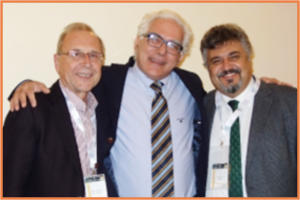
Prof Ioannis Stefanidis between Prof Koulouridis (left)
and Prof Aciduman (right)

Fig 1. Prof. Janusz Ostrowski at the Library
of the University of Padua (photo Maria Ostrowska)

Fig. 2. Prof. Janusz Ostrowski during the lecture.
(photo Maria Ostrowska)
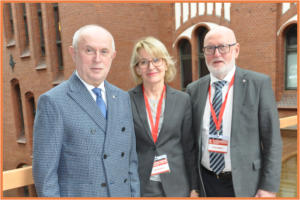
Fig. 3. From left: prof. Janusz Ostrowski, dr Dorota
Daniewska, prof. Ryszard Gellert (photo Maria Ostrowska)
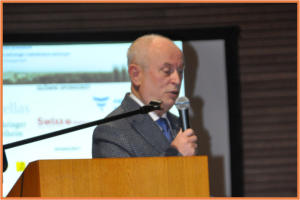
Fig. 4. Prof. Janusz Ostrowski (photo Maria Ostrowska)
Welcome address from the President of the Italian Society of Nephrology, prof Luca De Nicola
I
thank
Prof.
Davide
Viggiano
for
the
invitation
to
the
13th
Congress
of
the
International
Association
for
the
History
of
Nephrology,
although
unexpected
institutional commitments prevented me from participating.
I congratulate the IAHN for the excellent program.
I consider the History of Nephrology a fundamental aspect of specialist training in Nephrology.
Medicine
is
always
evolving
and
today
technological
improvements
are
being
accompanied
by
artificial
intelligence...
which
I
do
not
particularly
like
because
in
our
branch
today
full
of
elderly,
frail
and
multi-morbid
patients,
clinical
reasoning
and
critical
spirit
must
always
prevail,
which
have
little
to
do
with
the
standardization
of
diagnoses
and
therapies
that
can
derive
from
the
"uncritical"
application
of
guidelines
based
on
trials
in
patients
who
are
certainly
younger
and
with fewer comorbidities.
Knowing
the
History
of
Nephrology
brings
us
back
to
the
foundations
of
clinical
reasoning
that
our
fathers
used
with
few
diagnostic
and
therapeutic
tools.
We
have much, much to learn…the History of Nephrology is a gym for the mind of Nephrologists!
An
example
above
all
that
is
particularly
close
to
my
current
training
and
clinical
and
formative
practice…Barry
Brenner,
who
recently
passed
away,
was
the
father
of
renal
micropuncture
that
I
was
fortunate
enough
to
practice
for
two
years
in
San
Diego,
California.
Brenner
identified
glomerular
hyperfiltration
as
the
main
mechanism
of
progression
of
chronic
nephropathy
with
and
without
diabetes.
Today
when
I
talk
about
gliflozins,
and
when
I
prescribe
them,
I
always
think
of
Brenner's teaching that dates back 40-50 years ago but has now been widely taken up again to explain the nephroprotective effects of this class of drugs.
Therefore, I invite you to open your minds to acquire the mechanisms of clinical reasoning of our fathers.
I wish you a good conference.
Prof. Luca De Nicola
President of the Italian Society of Nephrology
Full professor of Nephrology
University of Campania "L. Vanvitelli", Naples, Italy
Later,
from
November
21st
to
23rd,
I
participated
in
the
prestigious
24th
Katowice
Seminar,
Advances
in
Nephrology
and
Hypertension,
organised
by
Professor
Andrzej Więcek in Katowice, Poland. During the seminar, I presented a lecture titled Professor Zbylut Twardowski (1934–2024).
Professor
Więcek,
an
honorary
member
of
the
IAHN,
has
long
been
a
passionate
advocate
for
preserving
and
celebrating
the
history
of
nephrology.
During
his
presidency of the Polish Society of Nephrology, he established its Historical Section to highlight the development of nephrology and renal replacement therapies.
Janusz Ostrowski
Contents
Janusz Ostrowski
INTRODUCTION
Luca De Nicola
WELCOME ADDRESS FROM THE PRESIDENT OF THE ITALIAN SOCIETY OF NEPHROLOGY
Davide Viggiano
THE 13TH IAHN CONGRESS IN 2024: A DEEP DIVE INTO NEPHROLOGY’S RICH HISTORY
Natale Gaspare De Santo
PROFESSORS EMERITI AT THE 13TH CONGRESS OF THE INTERNATIONAL ASSOCIATION FOR THE HISTORY
OF NEPHROLOGY IN NAPLES
Katarina Derzsiova
FERDINAND DEMANT AND THE BIRTH OF PEDIATRIC NEPHROLOGY IN KOSICE
Natale Gaspare De Santo
DANA BARAN, PRESIDENT OF THE INTERNATIONAL SOCIETY OF HISTORY OF MEDICINE
Janusz Ostrowski
INFO FROM POLAND
Natale Gaspare De Santo
PROFESSORS EMERITI AT THE 49TH CONGRESS OF THE INTERNATIONAL SOCIETY OF HISTORY OF MEDICINE
(SALERNO, OCTOBER 2024)
Guido Bellinghieri
THE ITALIAN SOCIETY OF NEPHROLOGY AWARDED THE ANTONIO VERCELLONE PRIZE FOR HUMANISM IN MEDICINE
TO NATALE GASPARE DE SANTO
Davide Viggiano
CREATIVITY IN THE HISTORY OF NEPHROLOGY
Davide Viggiano
IAHN BULLETIN EXPANDS COVERAGE WITH BOOK REVIEWS AND DIGITAL RESOURCES
XIII IAHN CONGRESS - BOOK OF ABSTRACTS
Dr. Rosa Maria De Santo